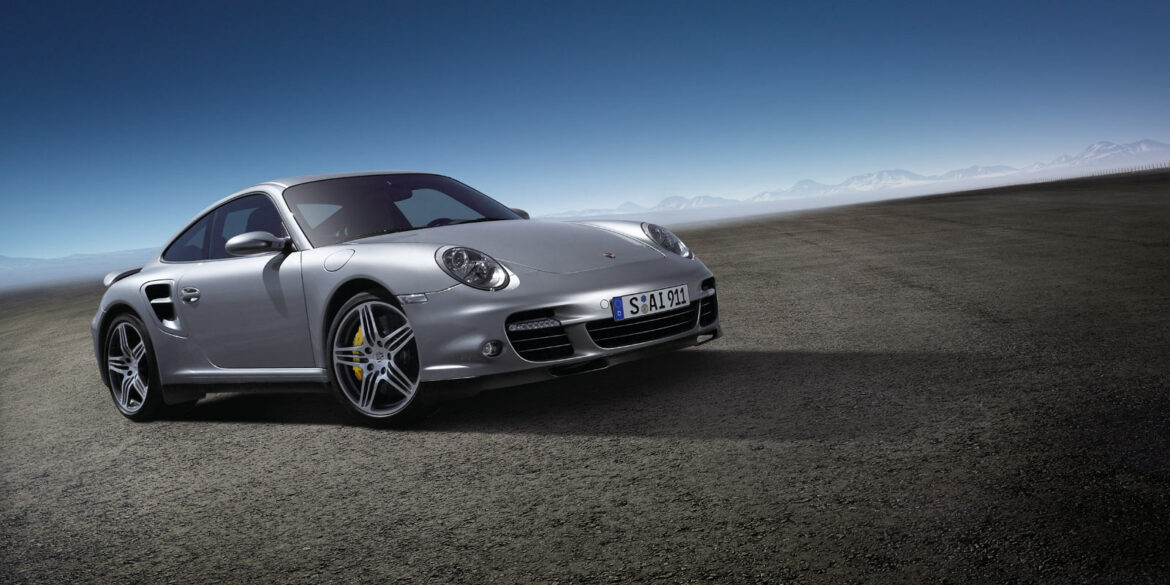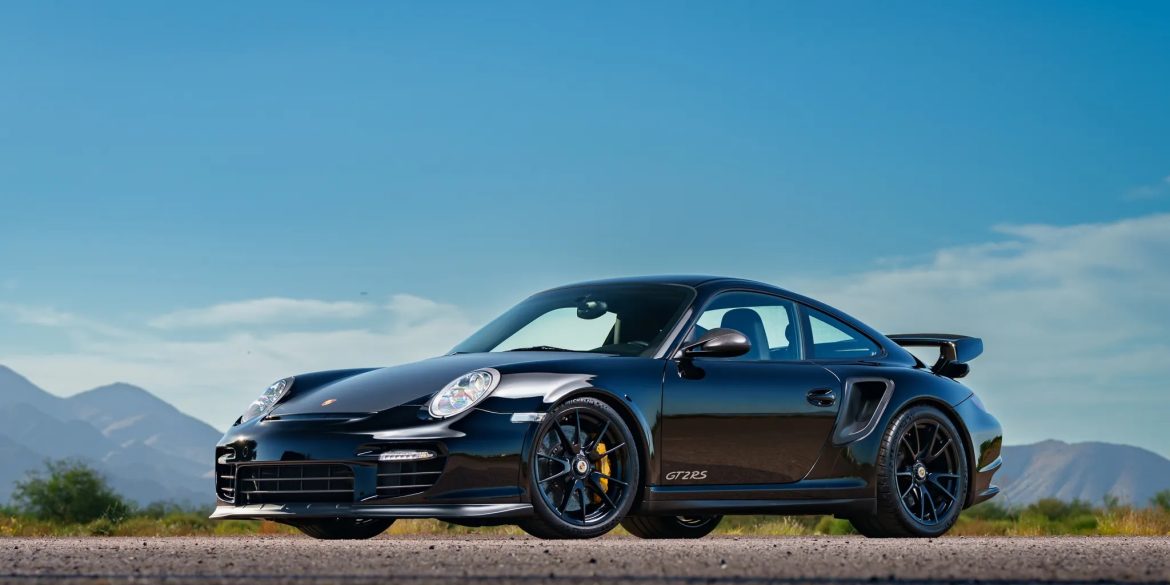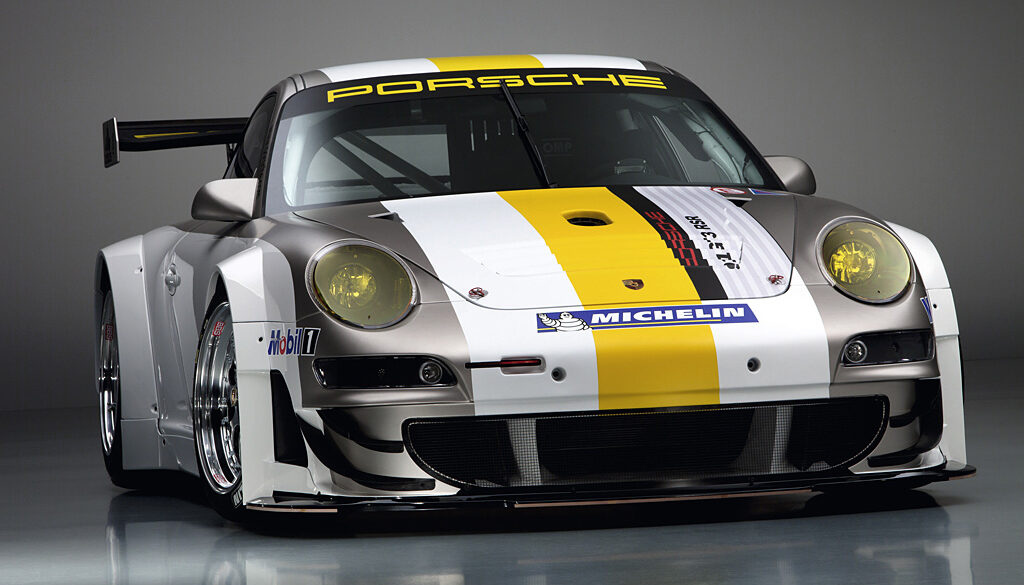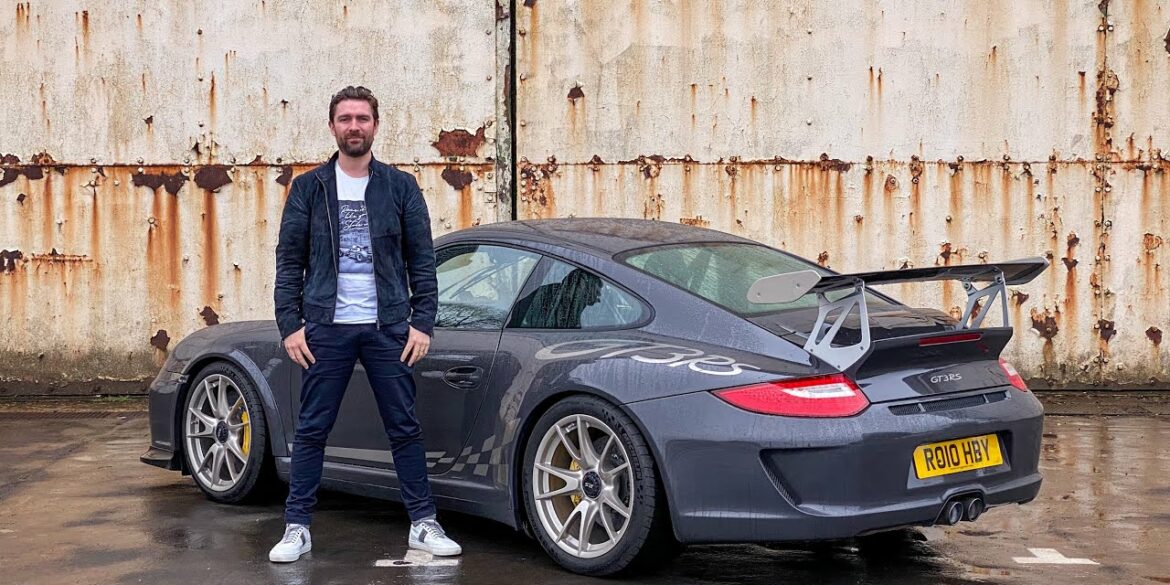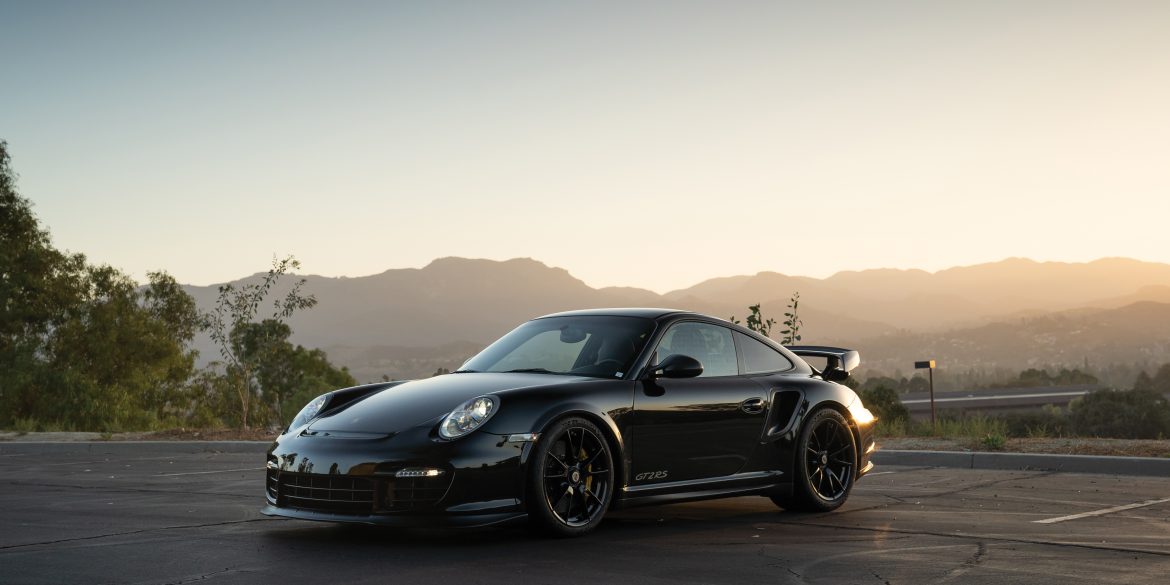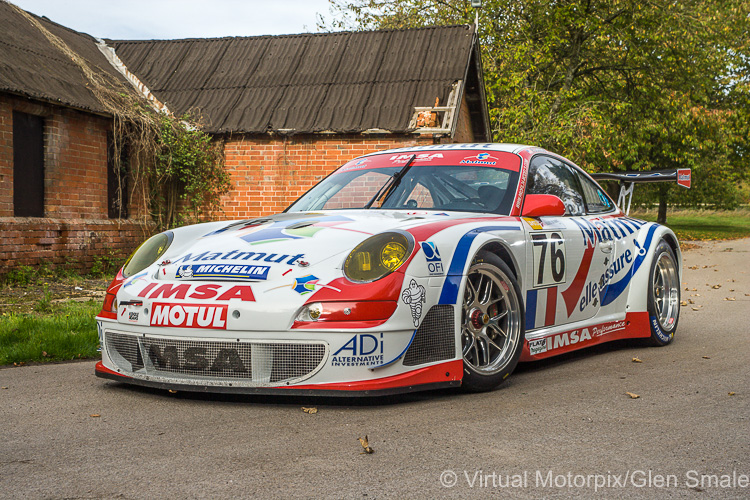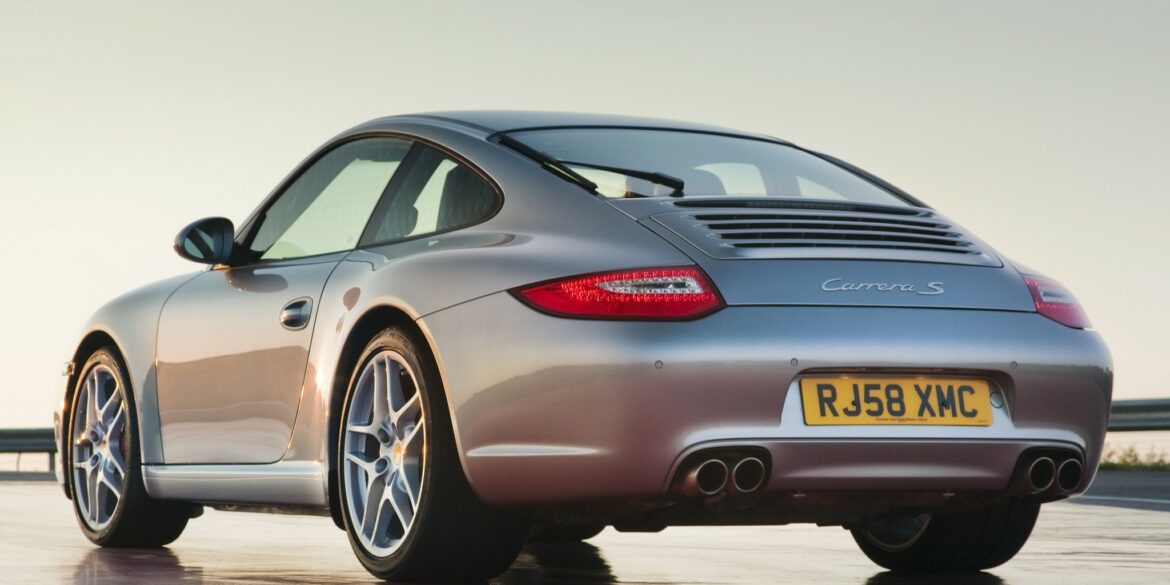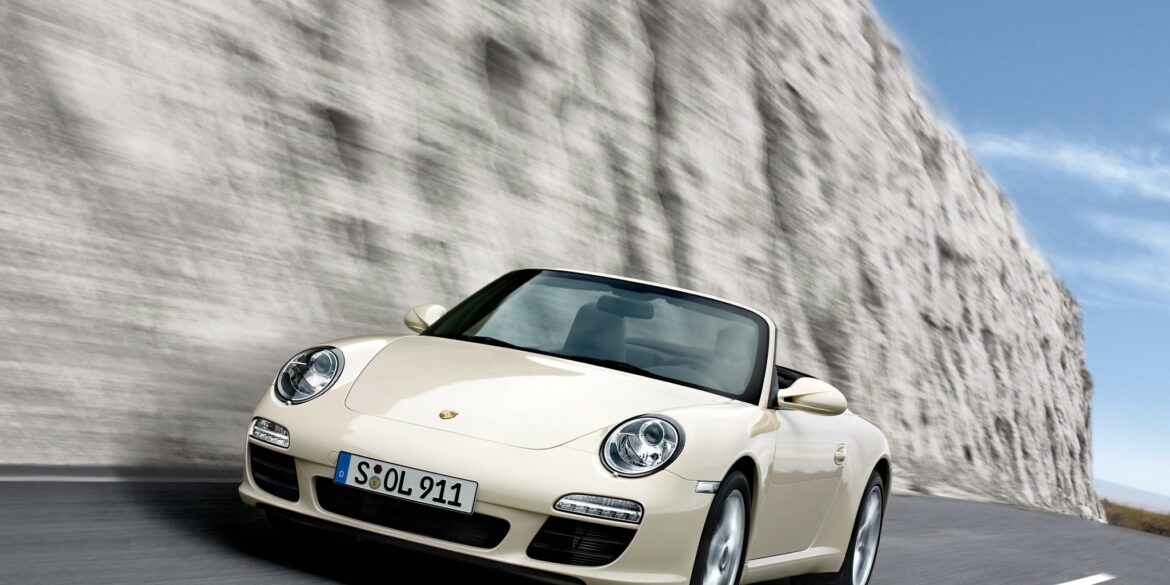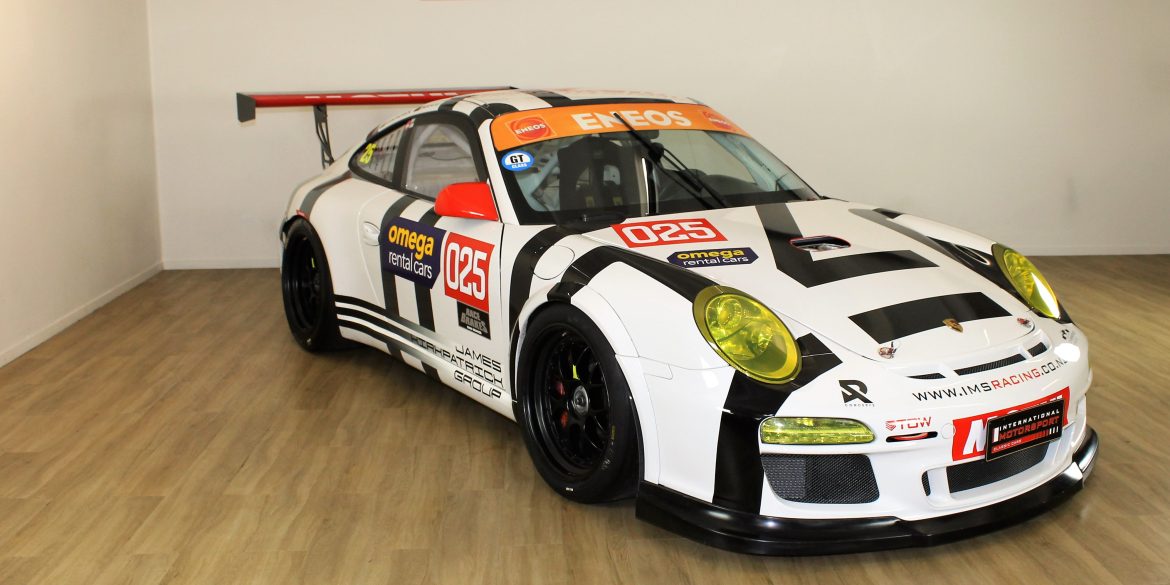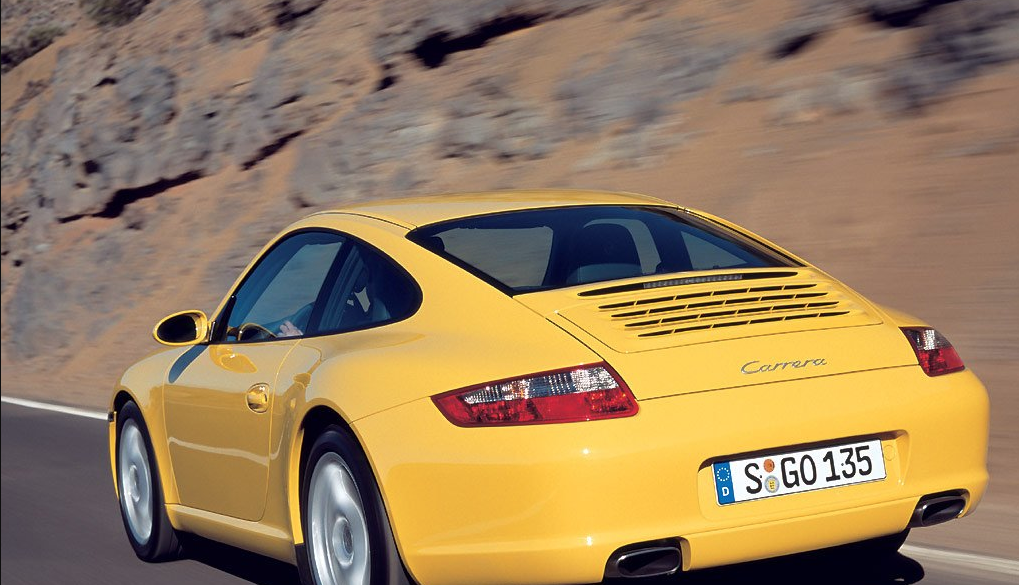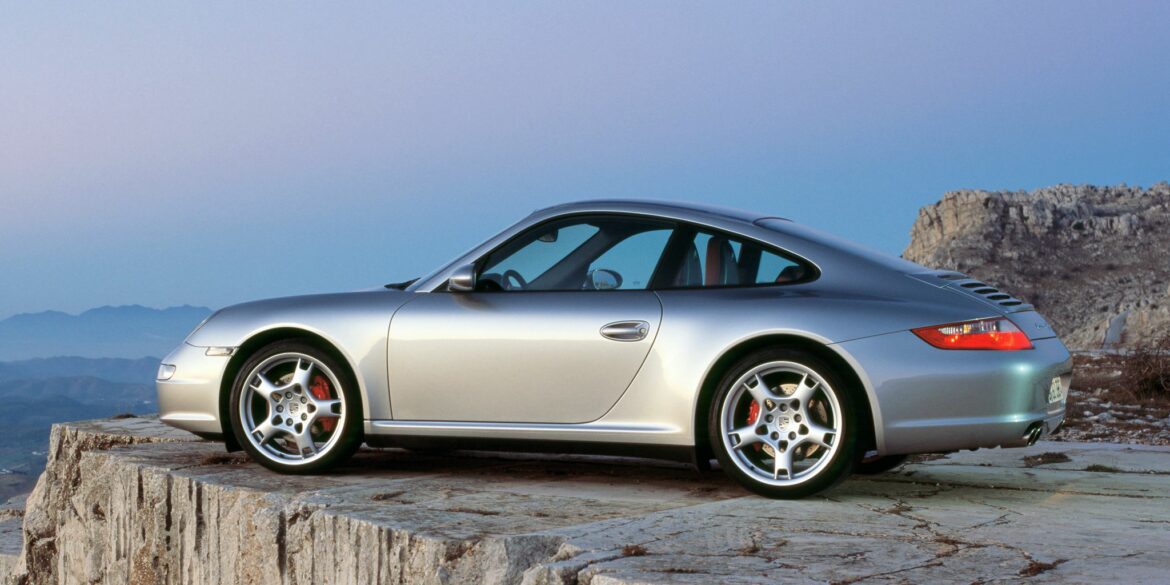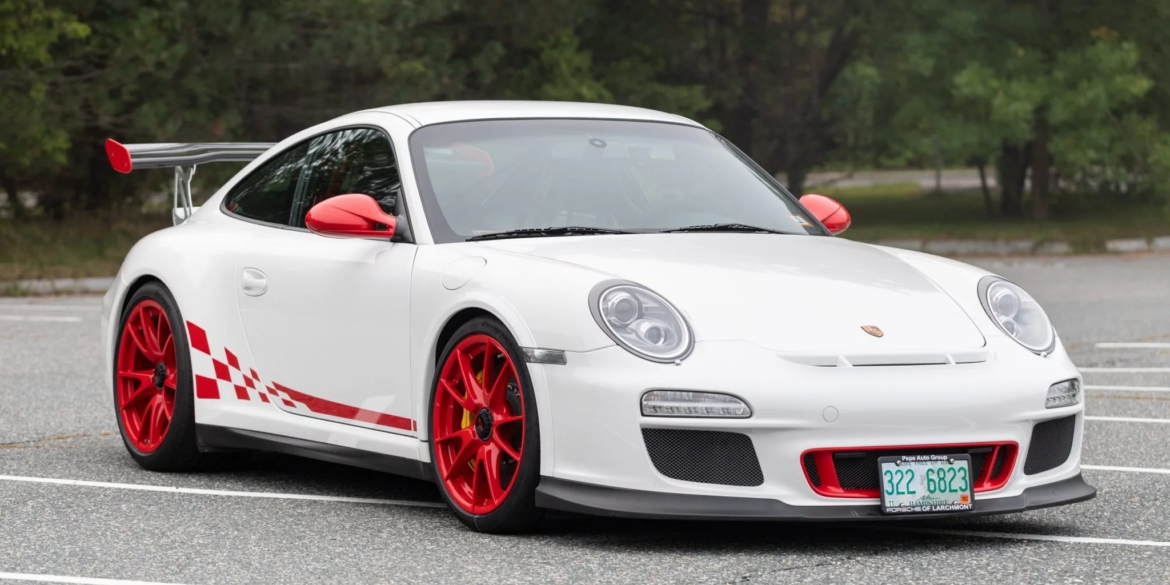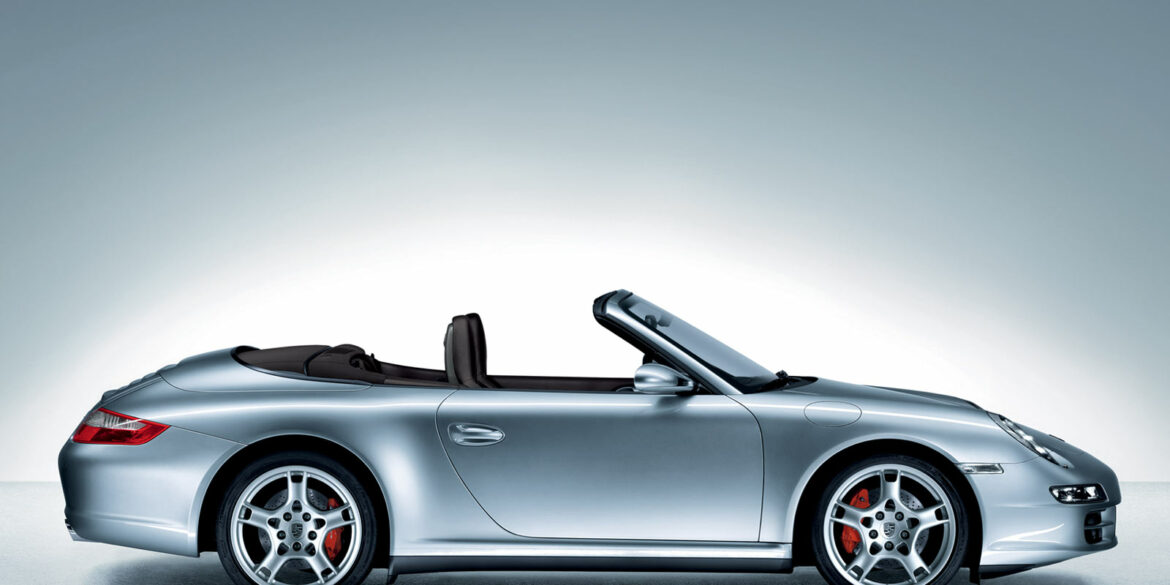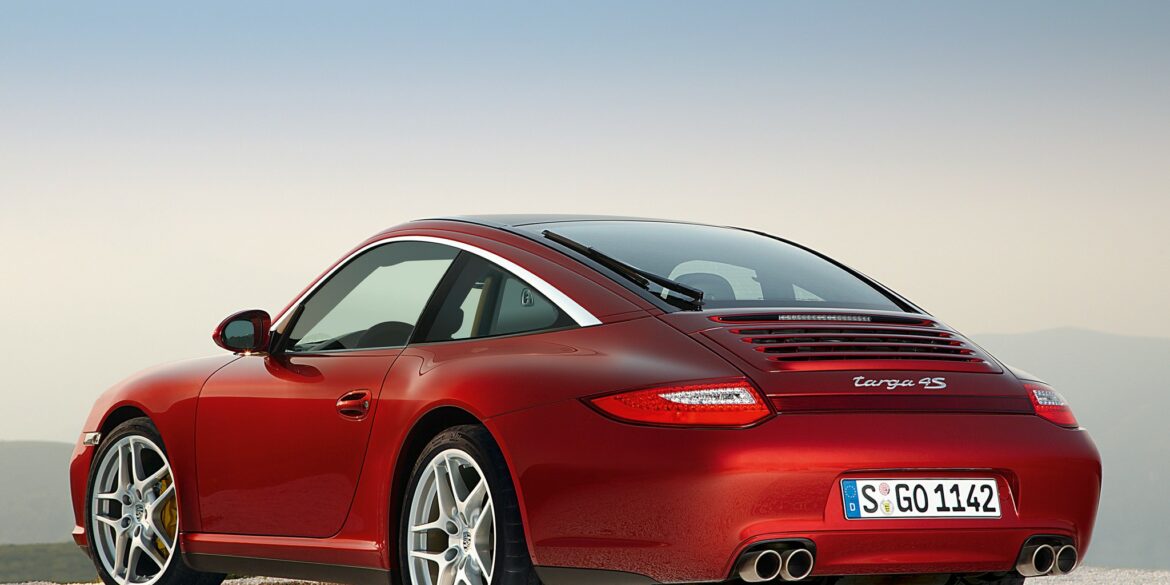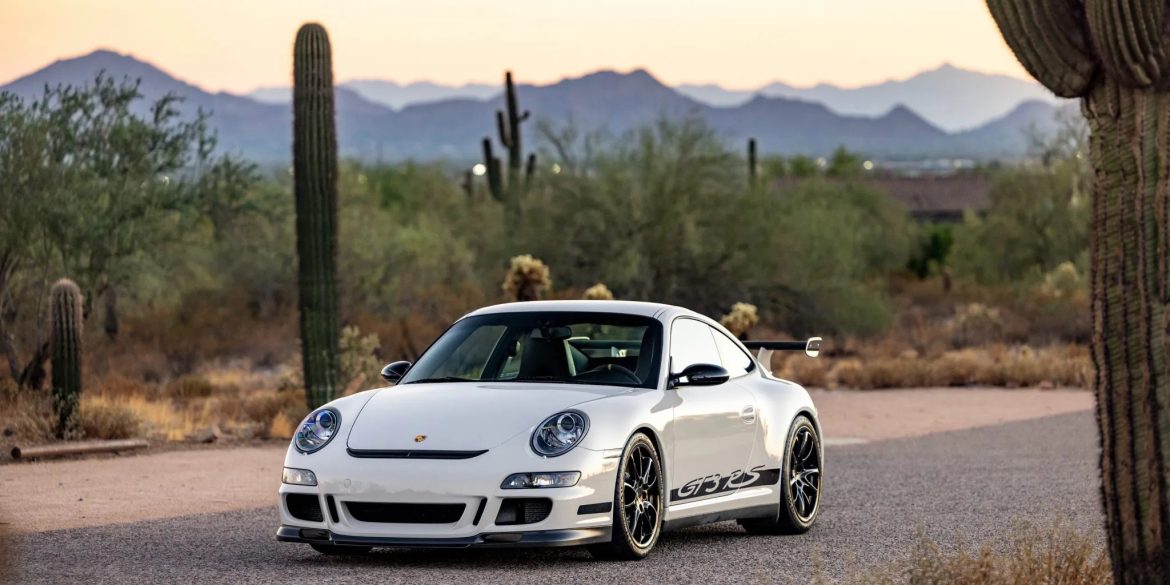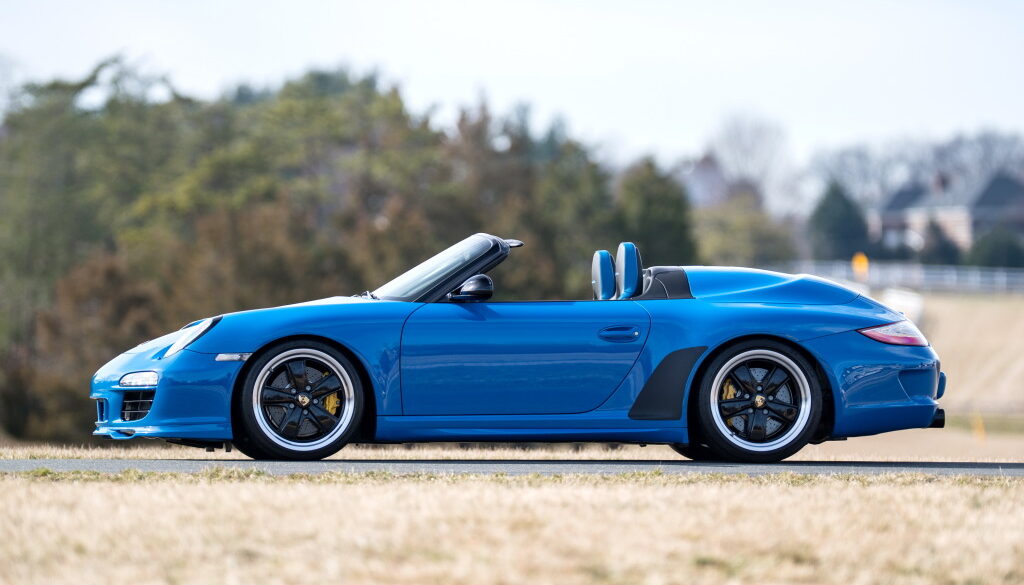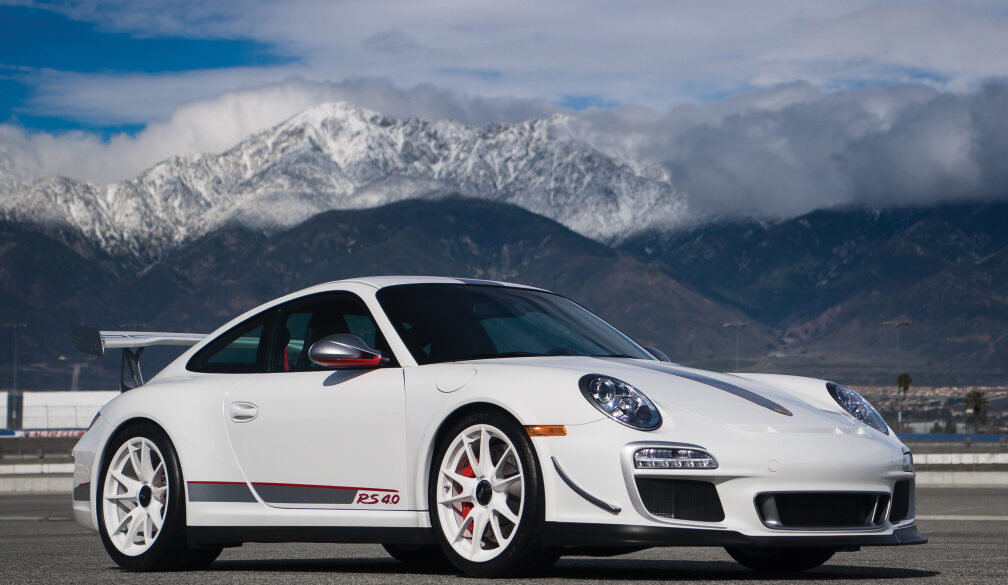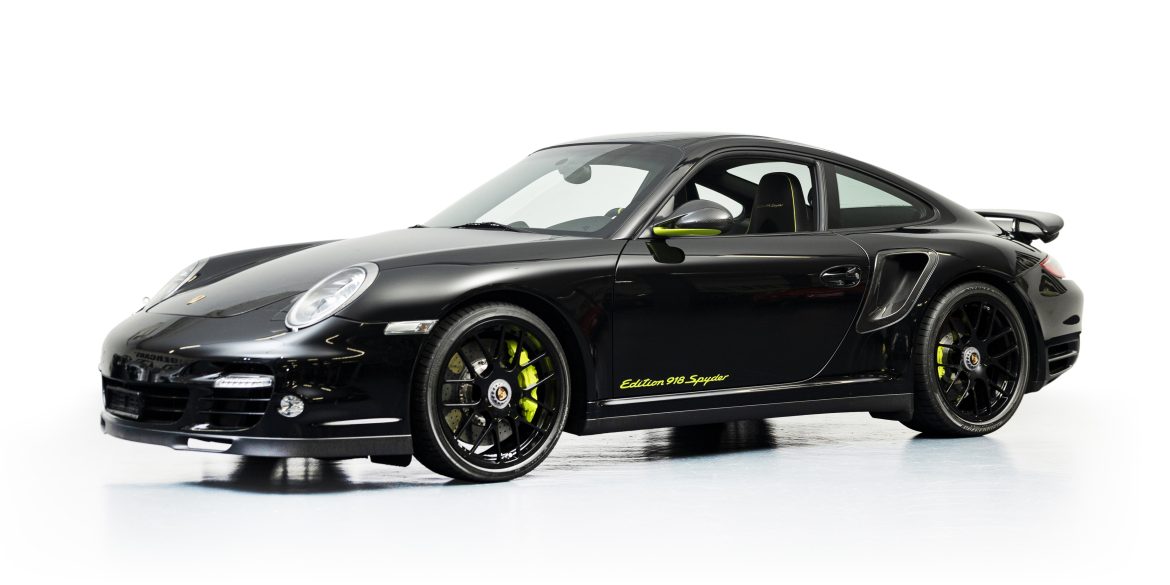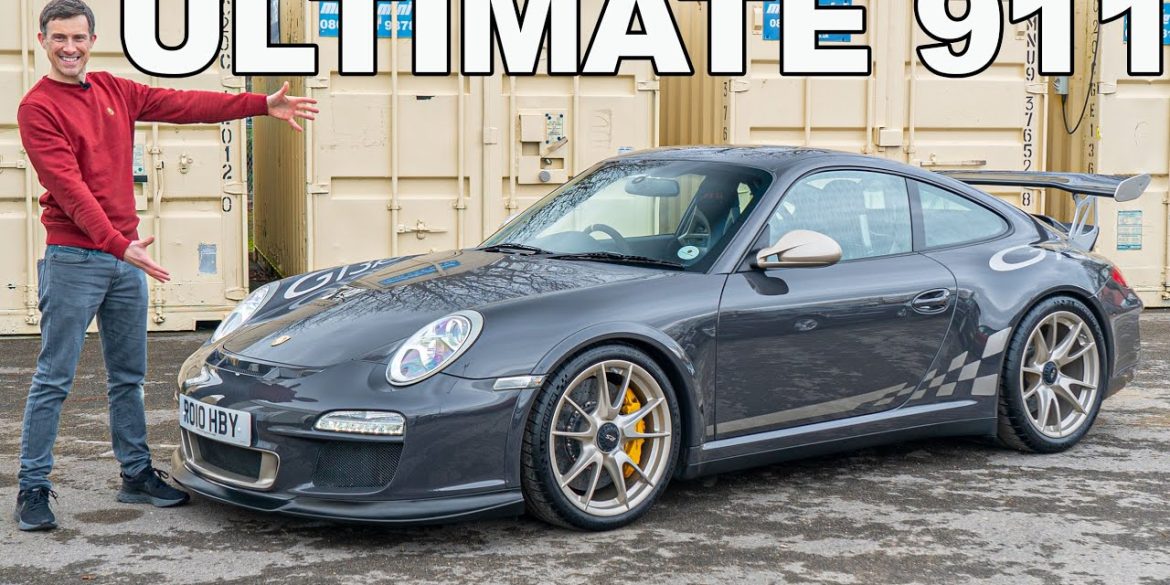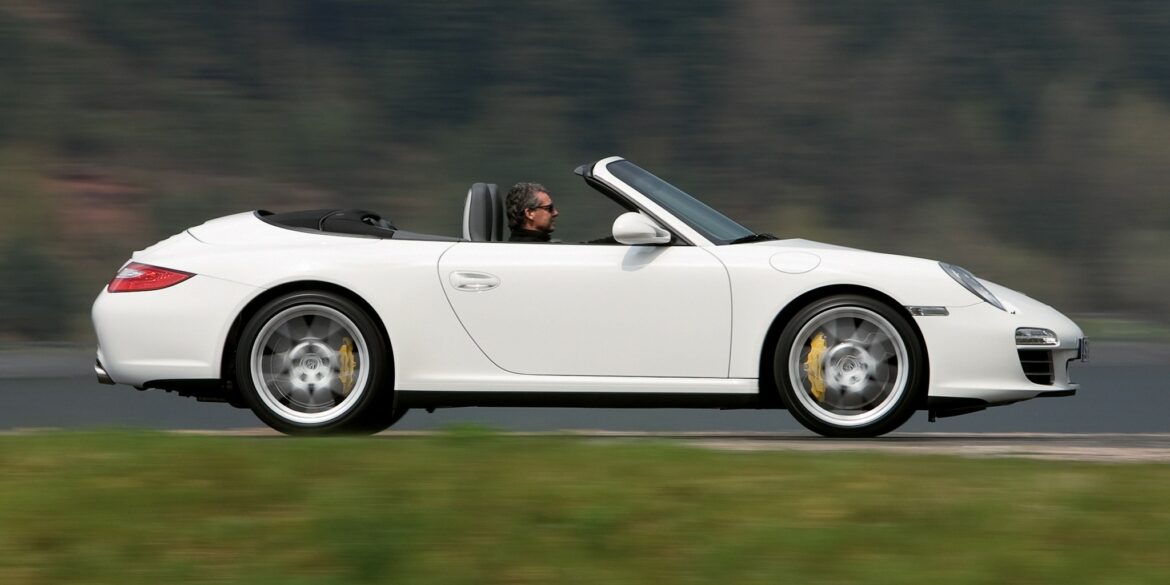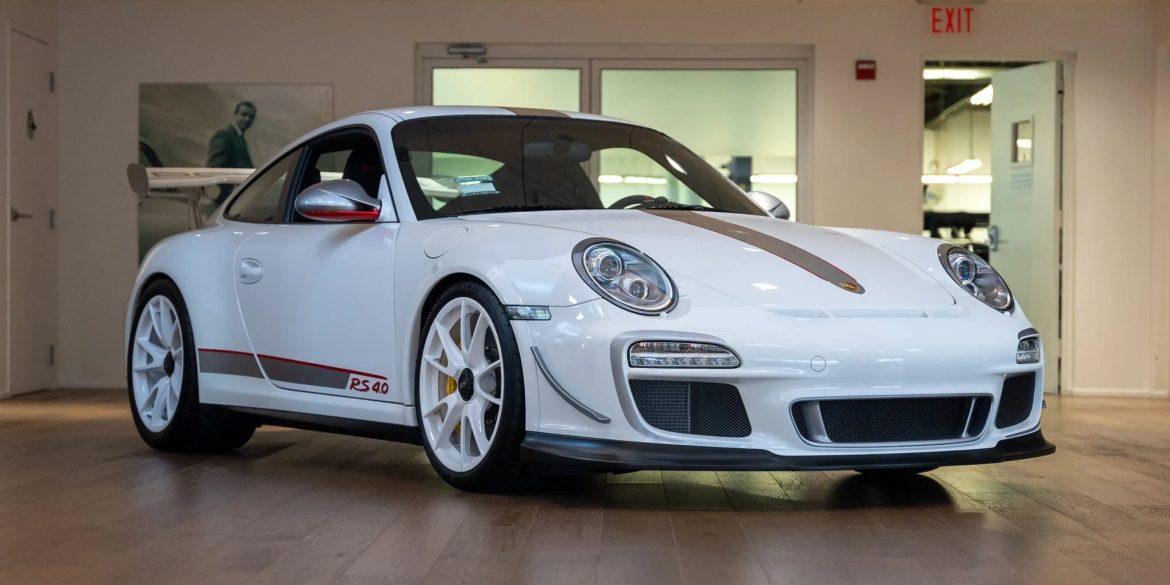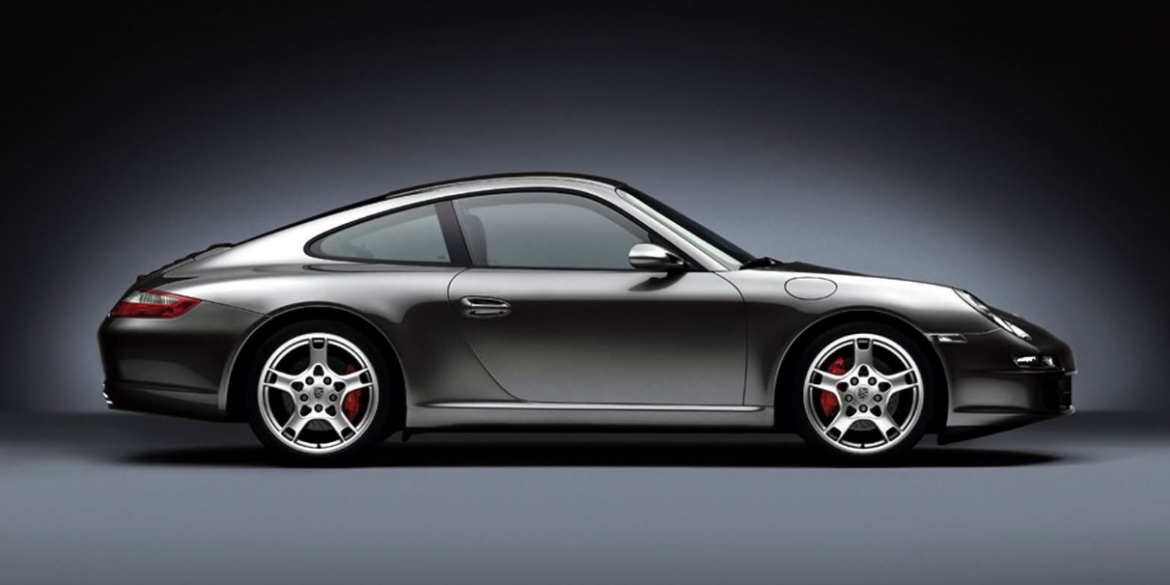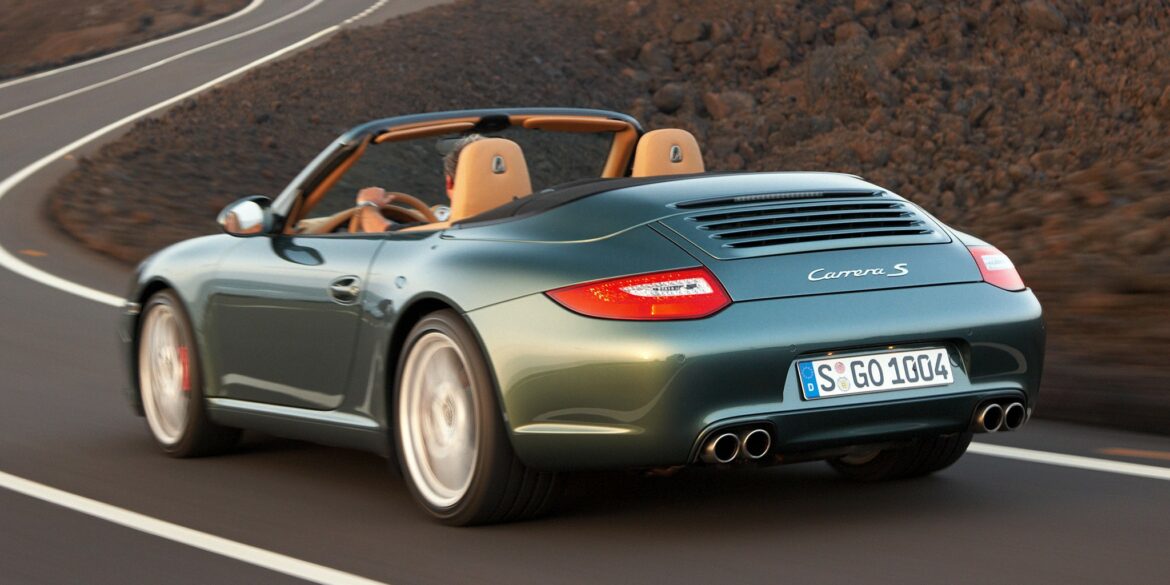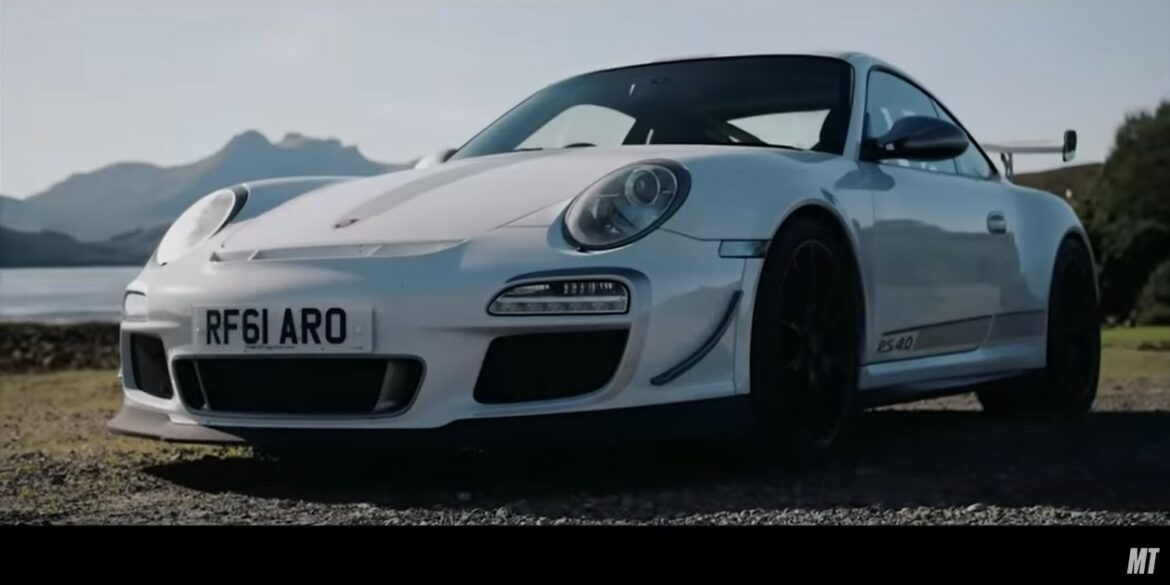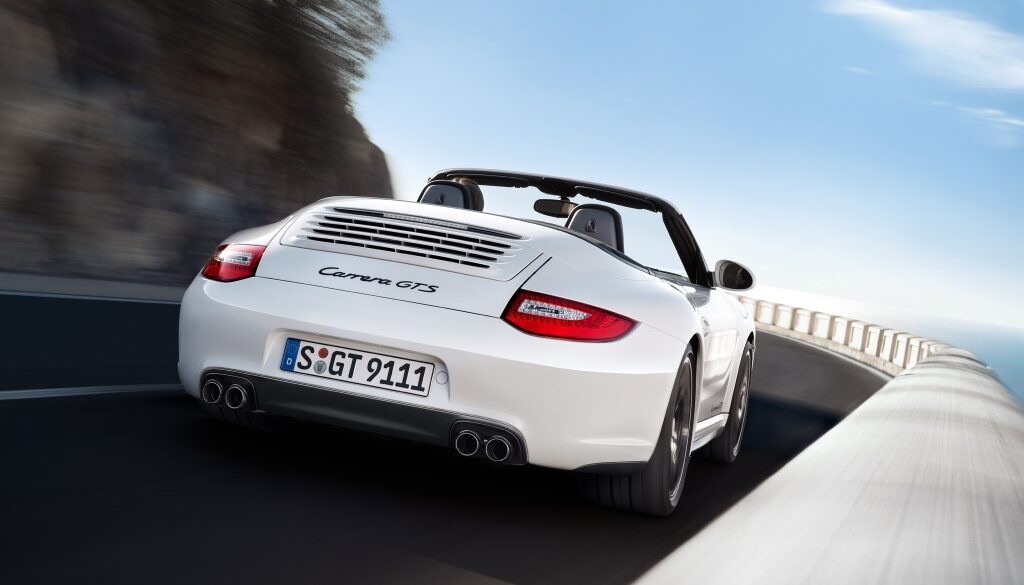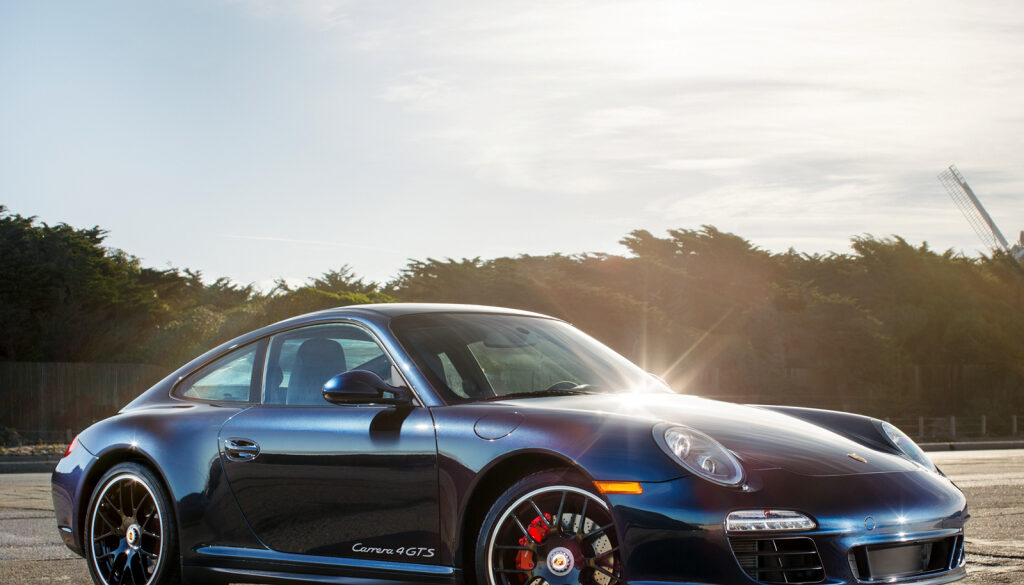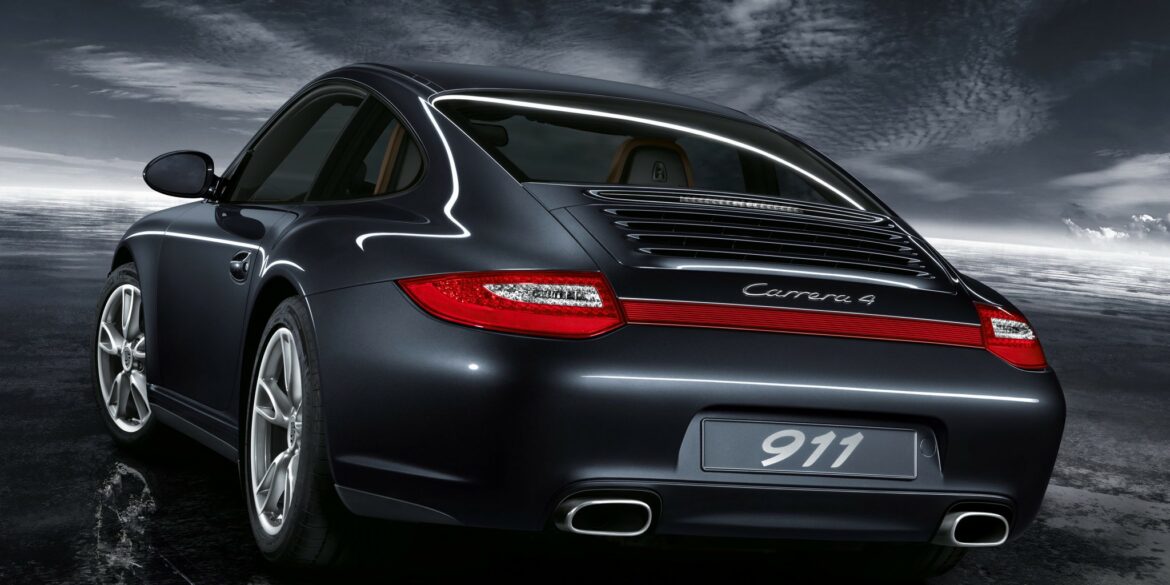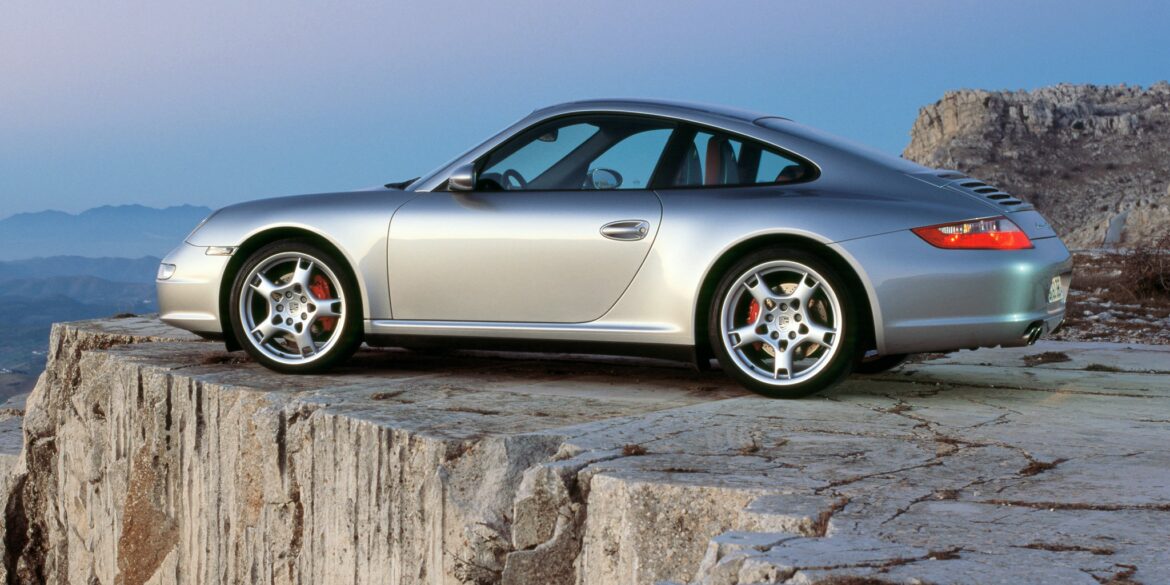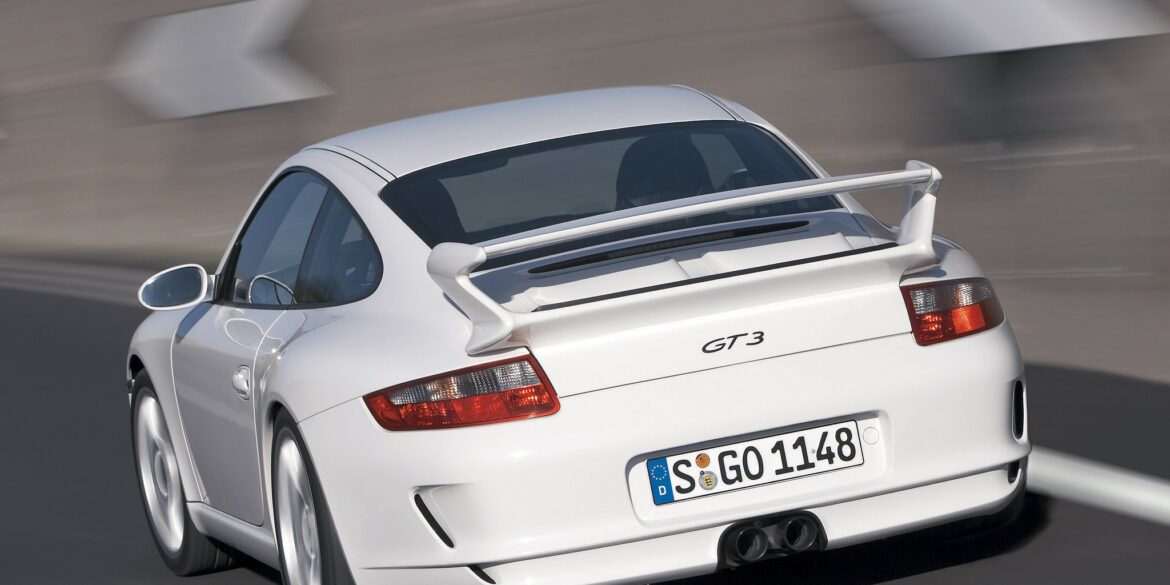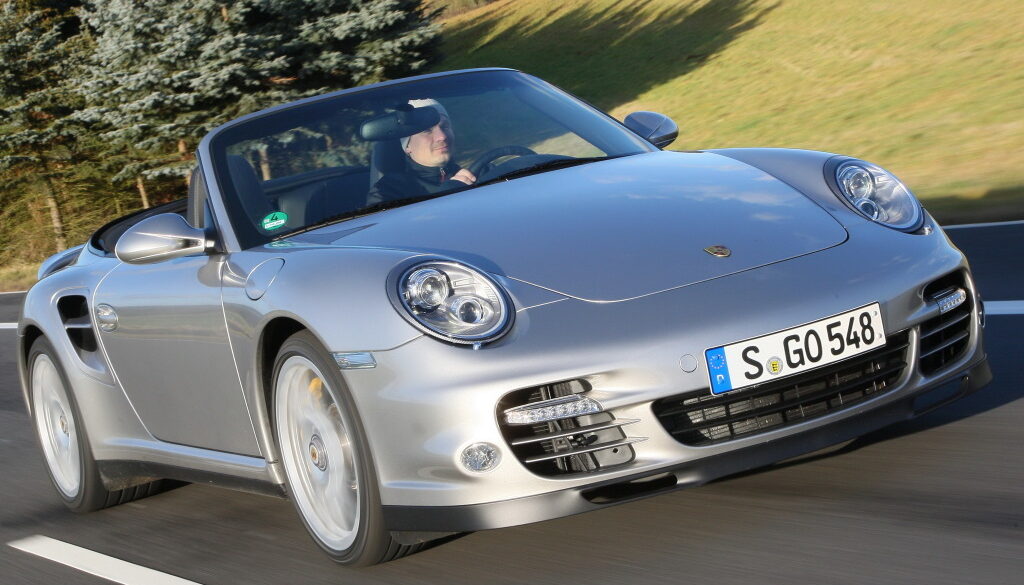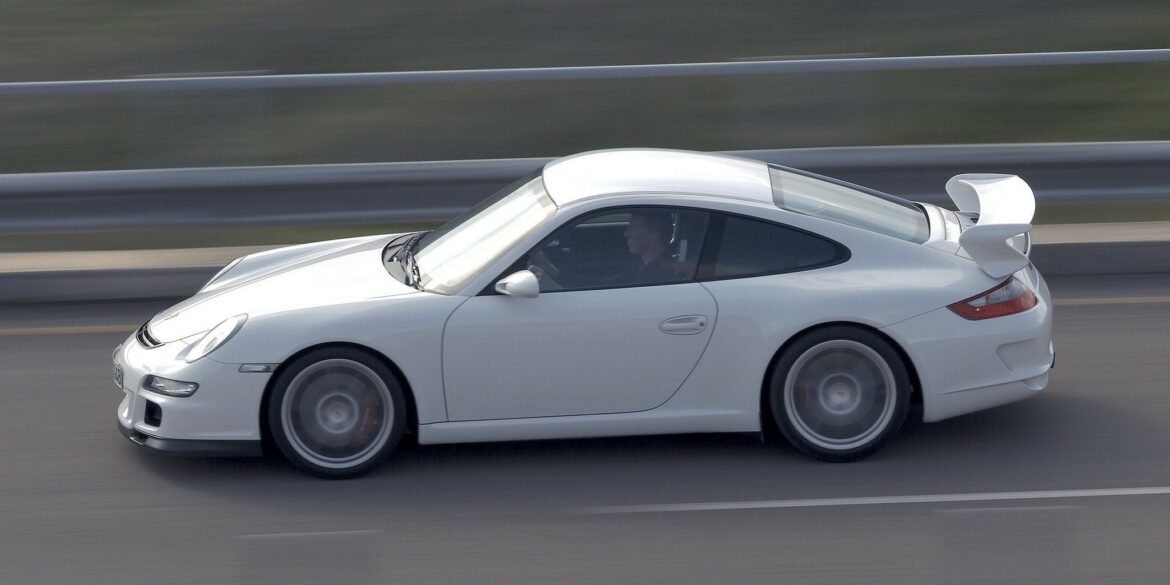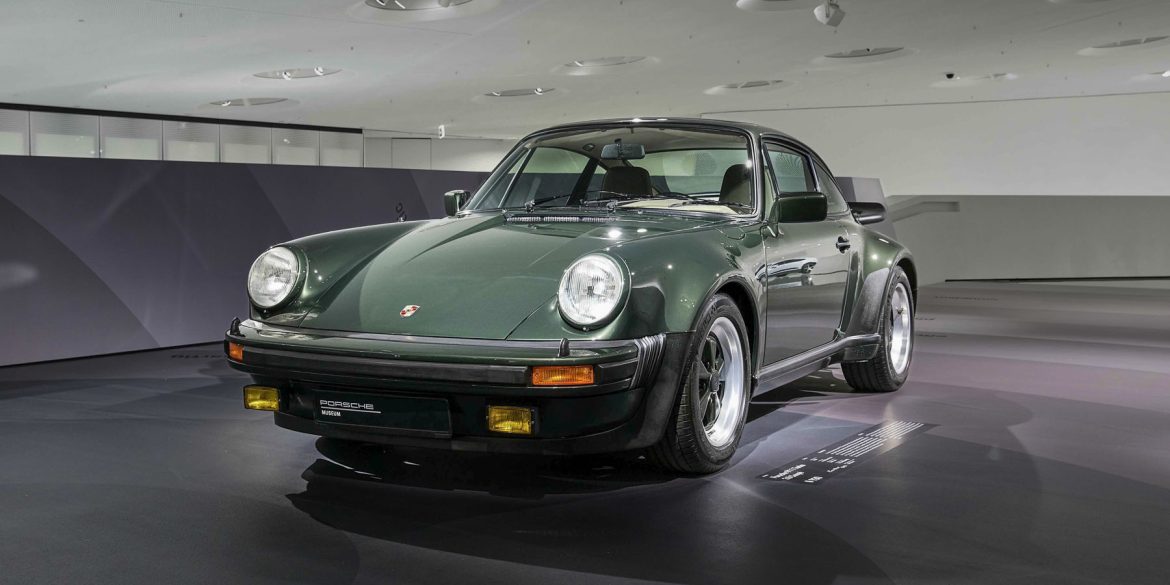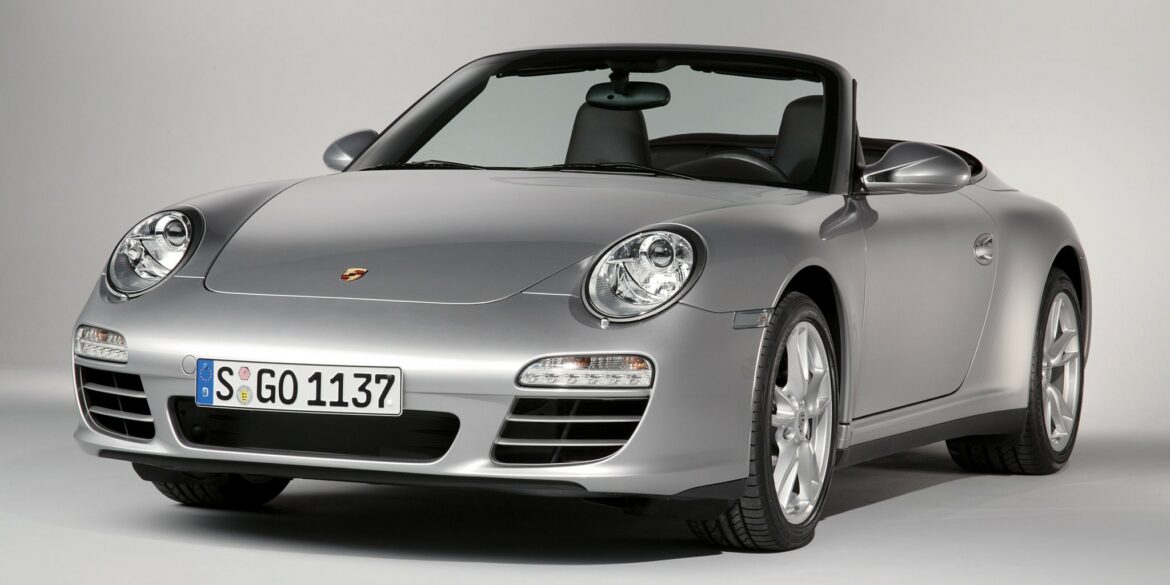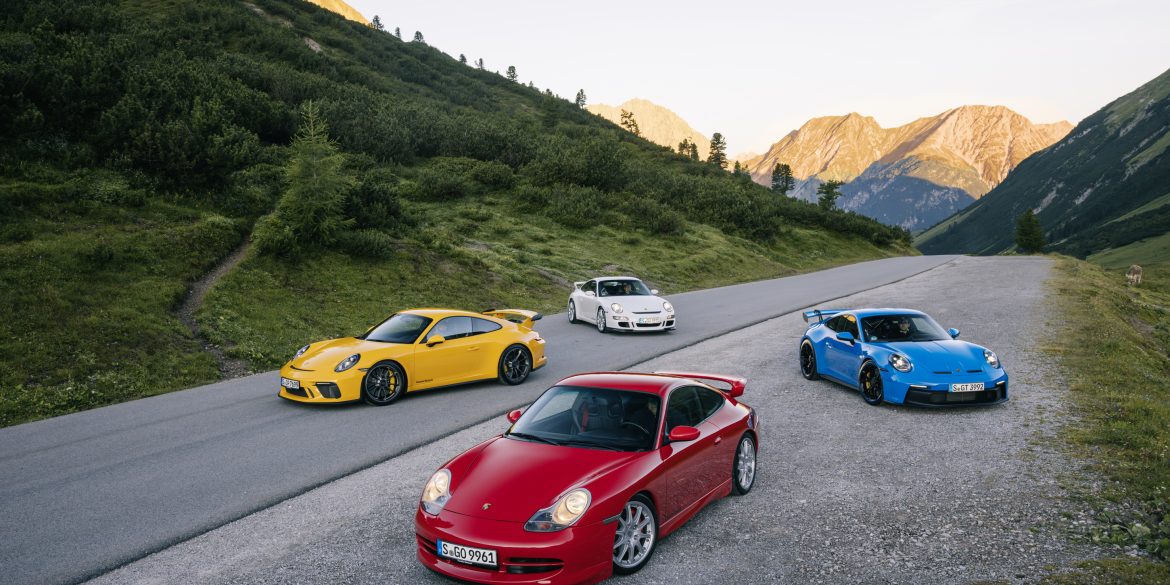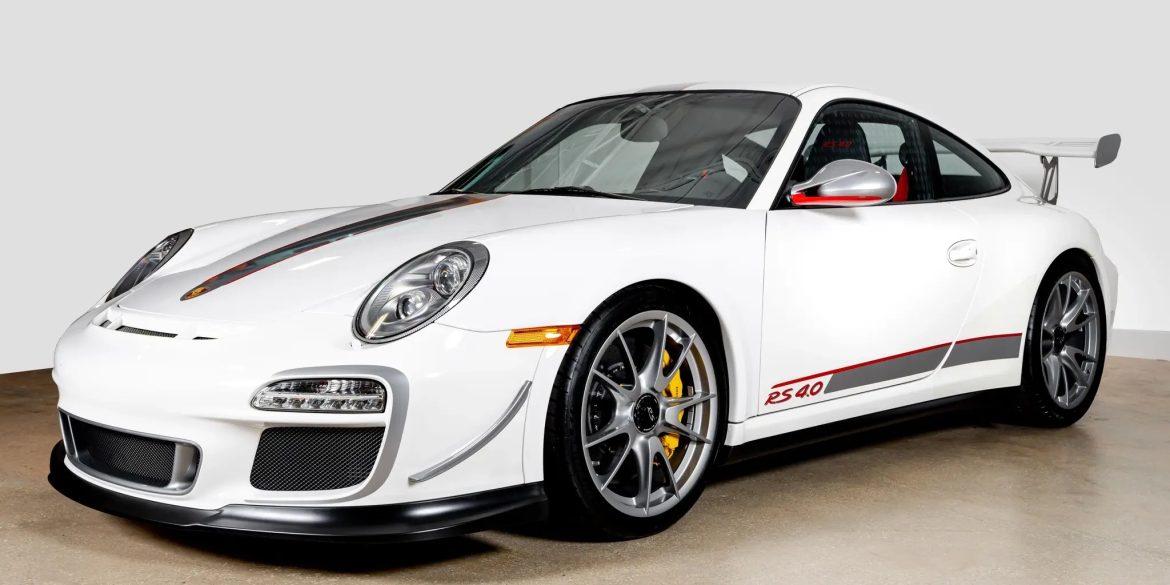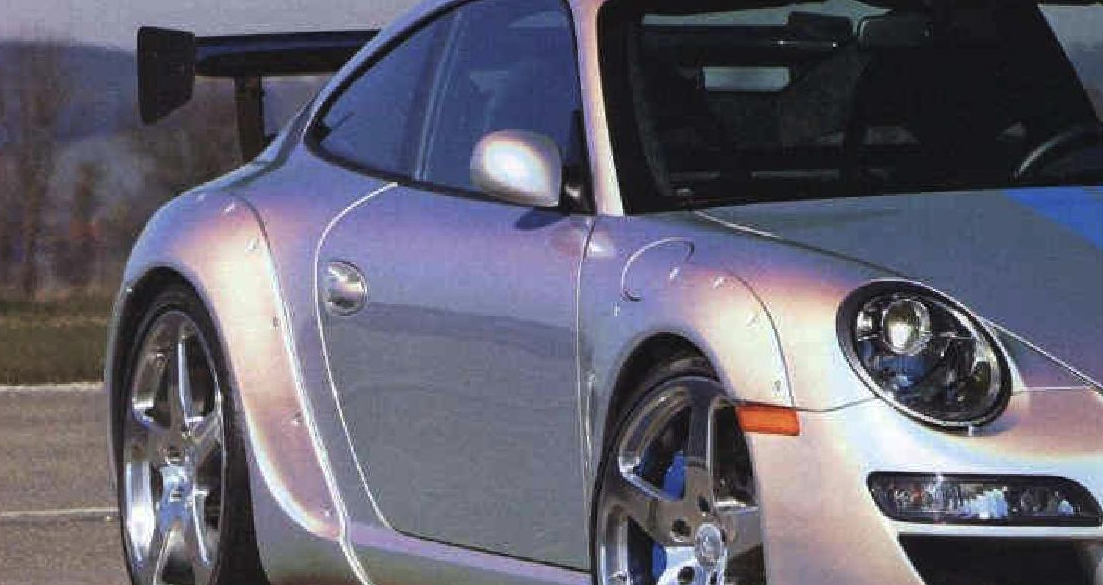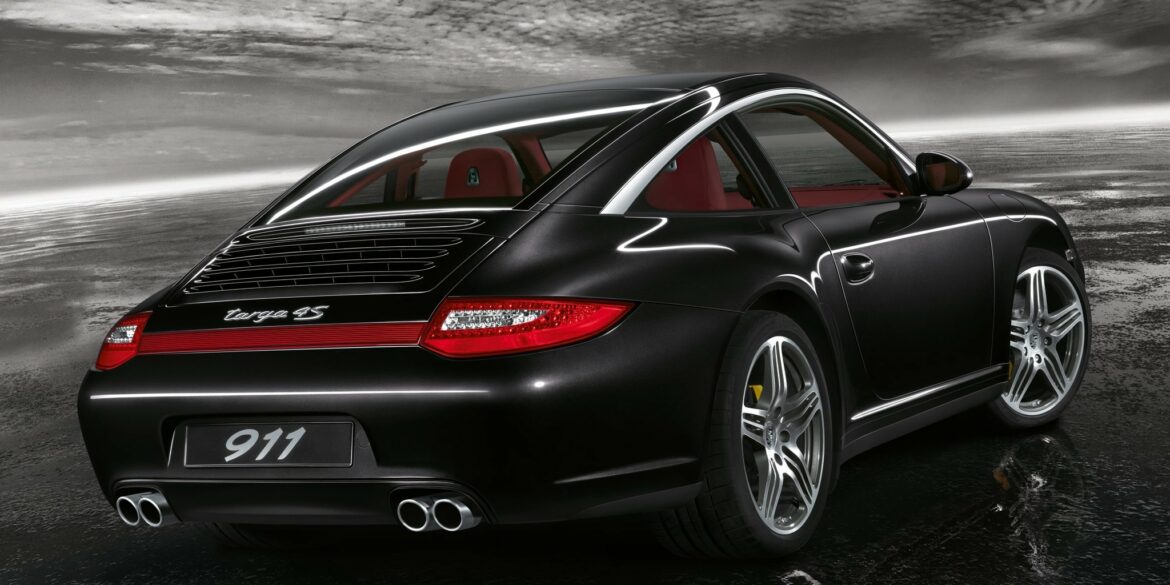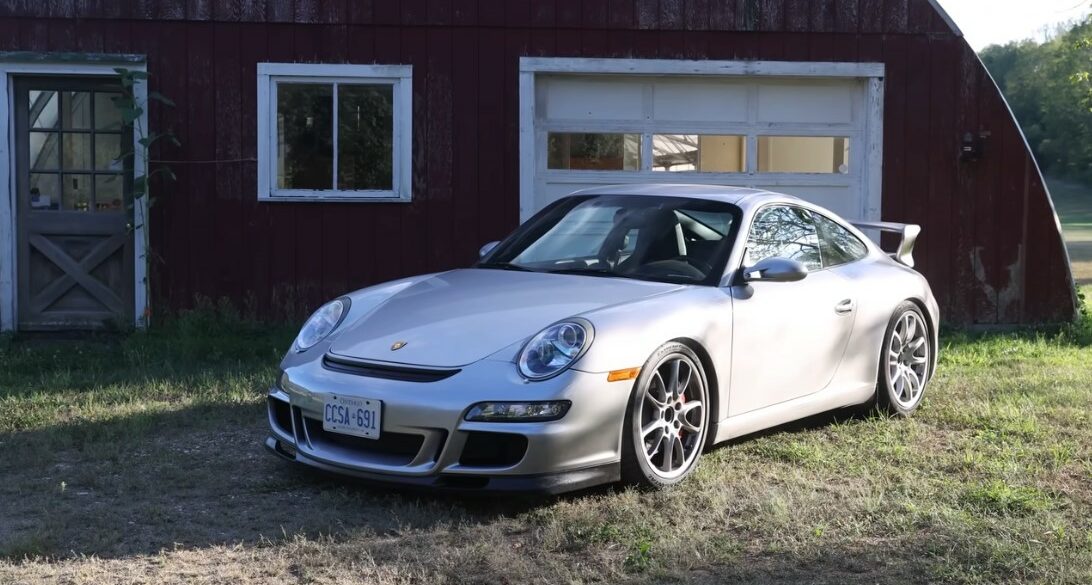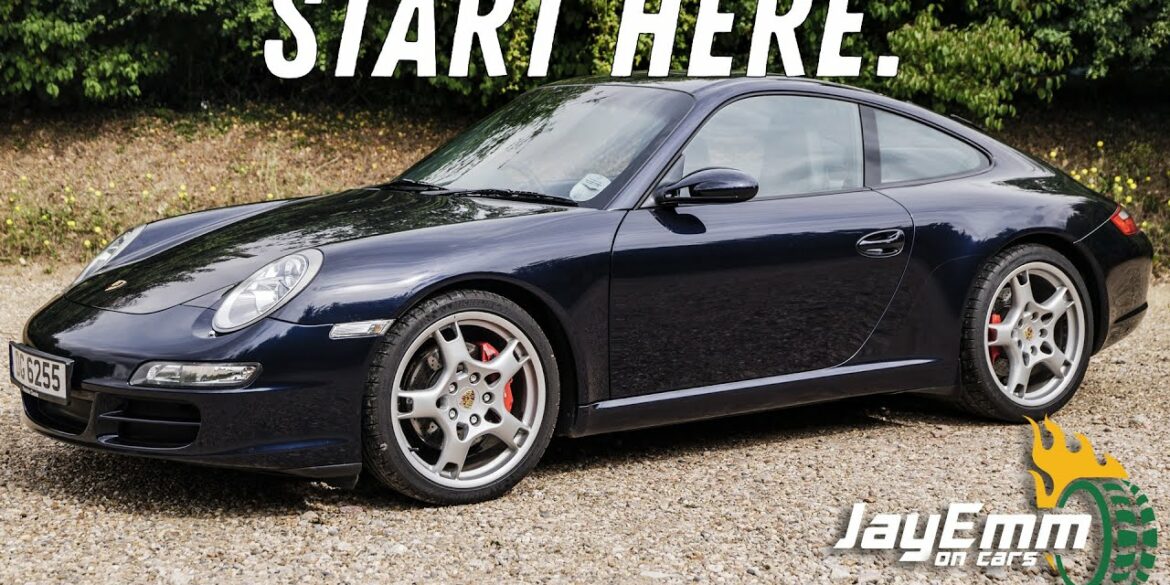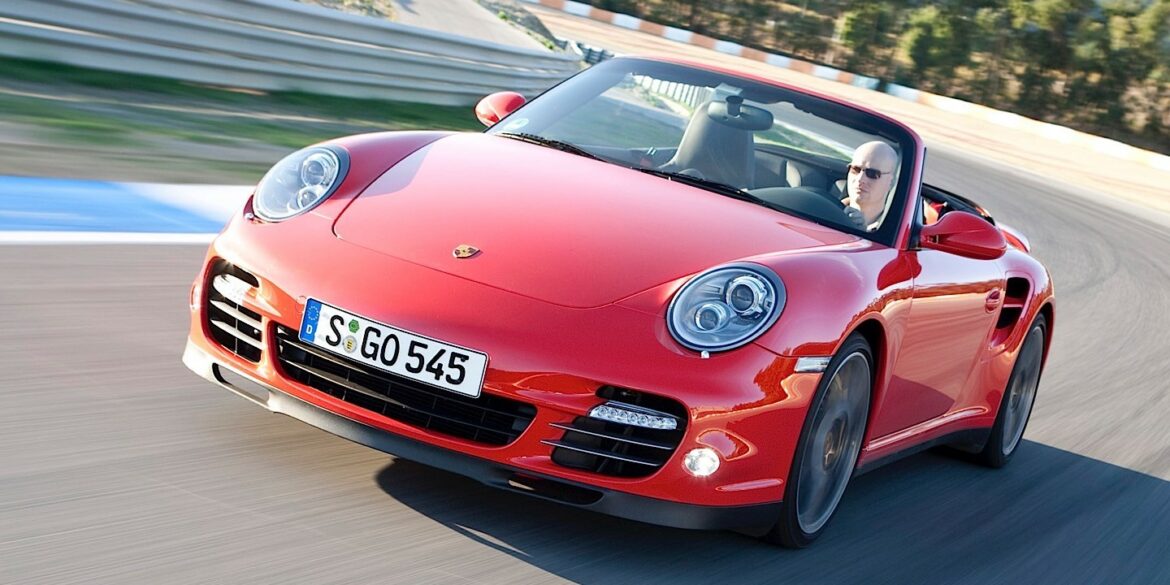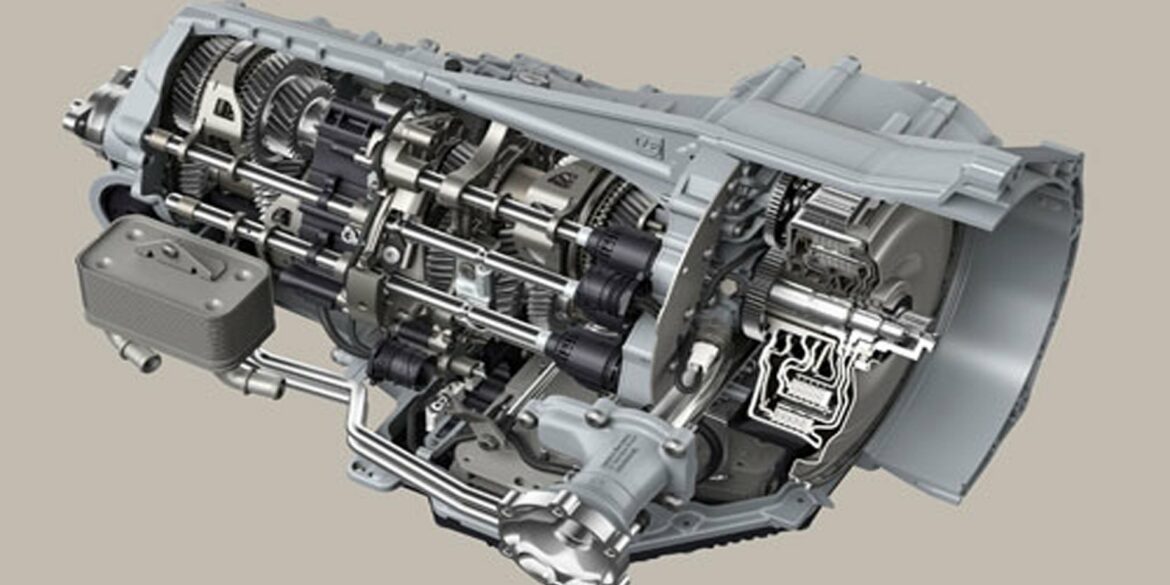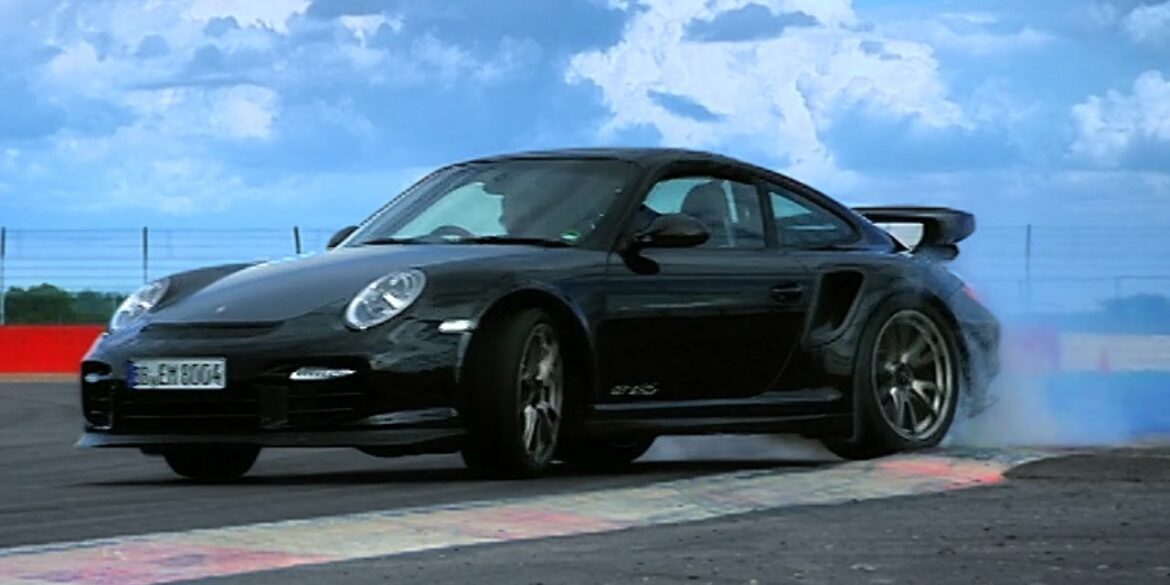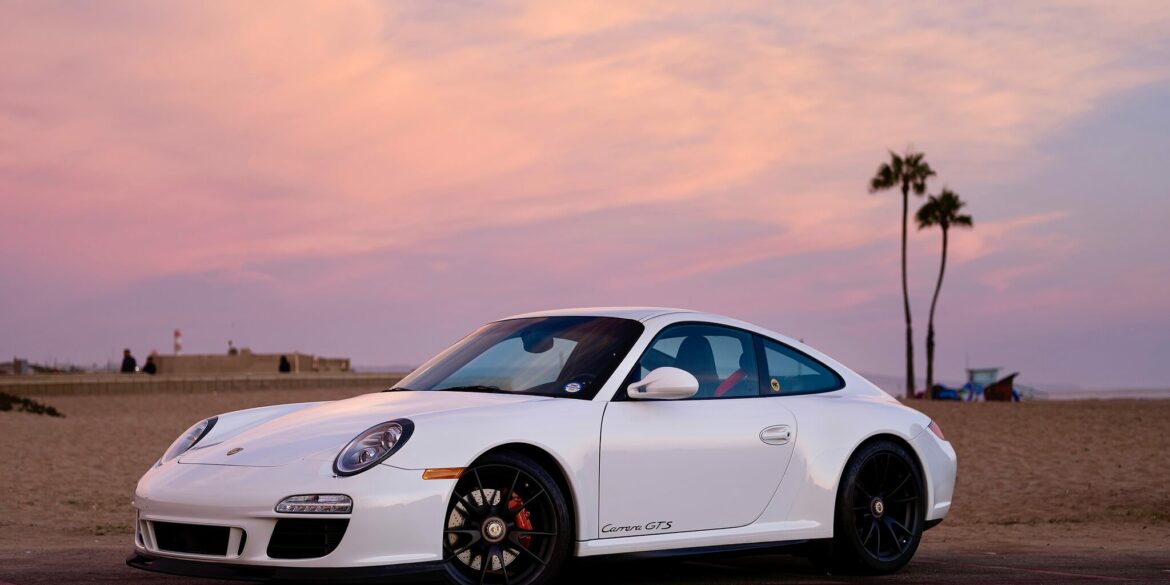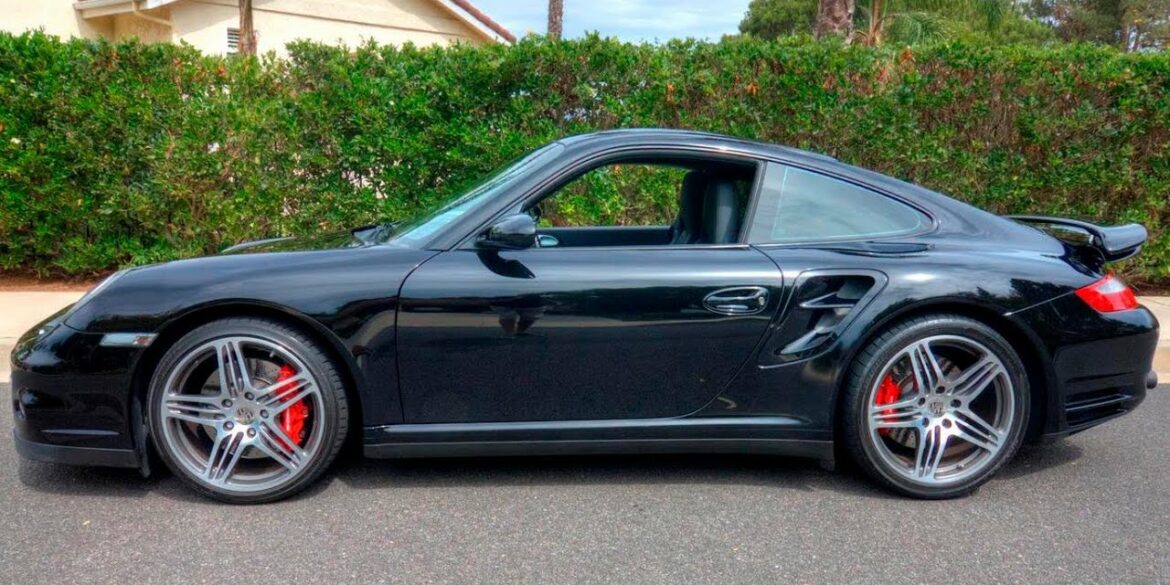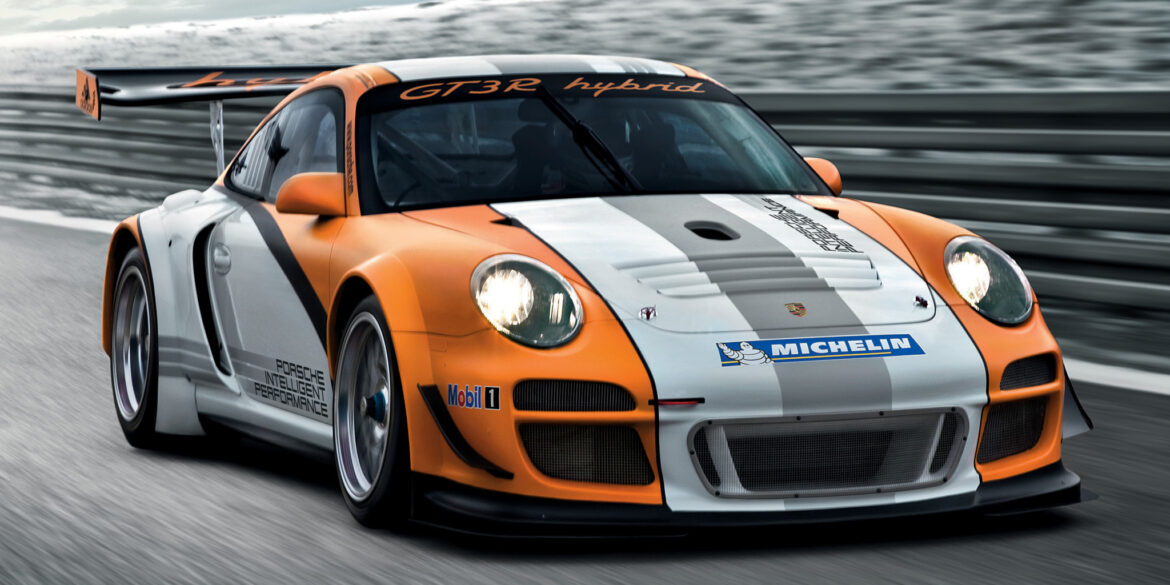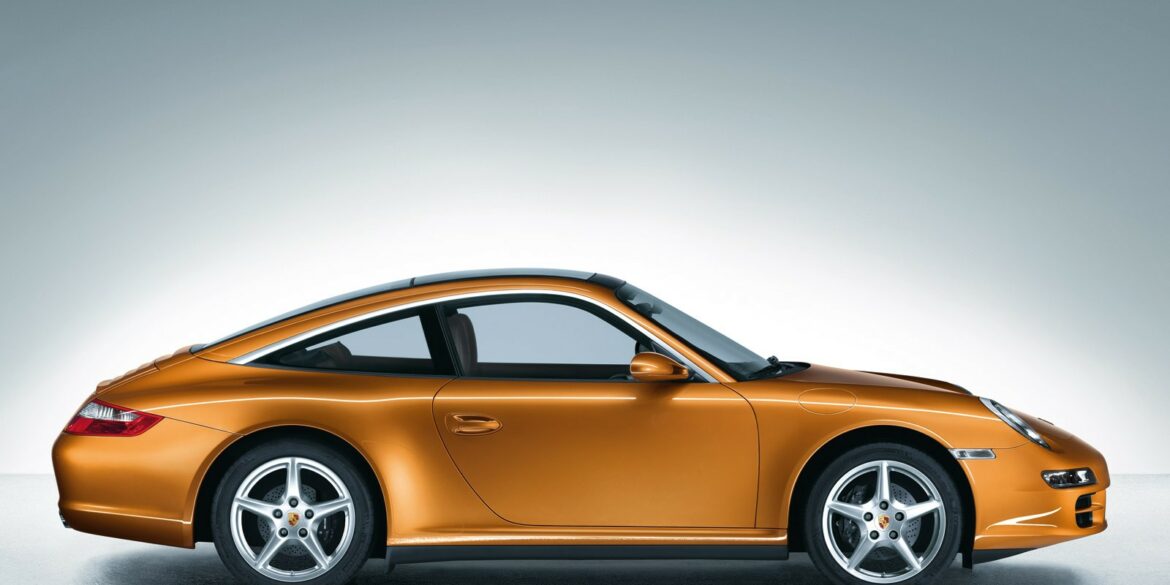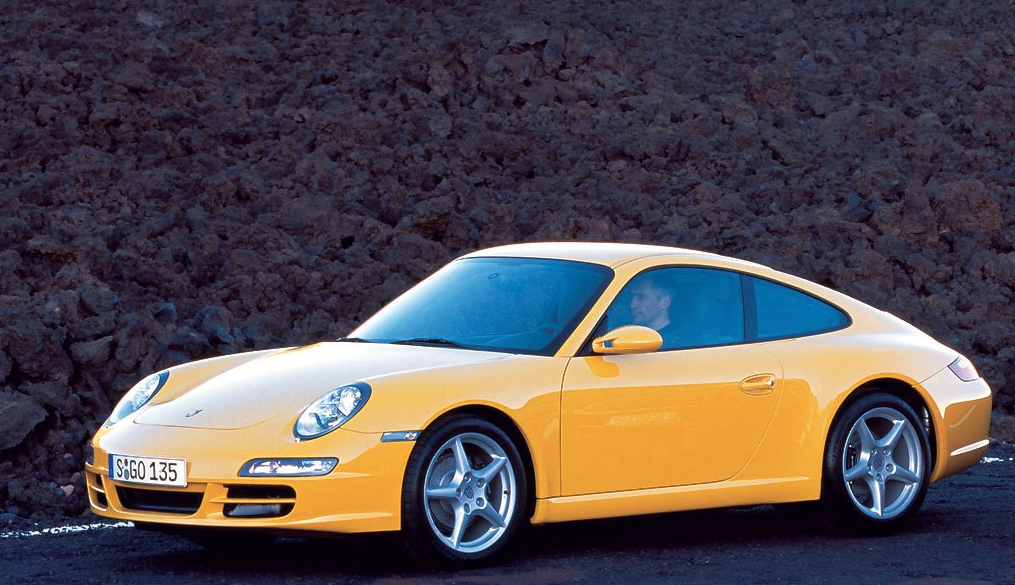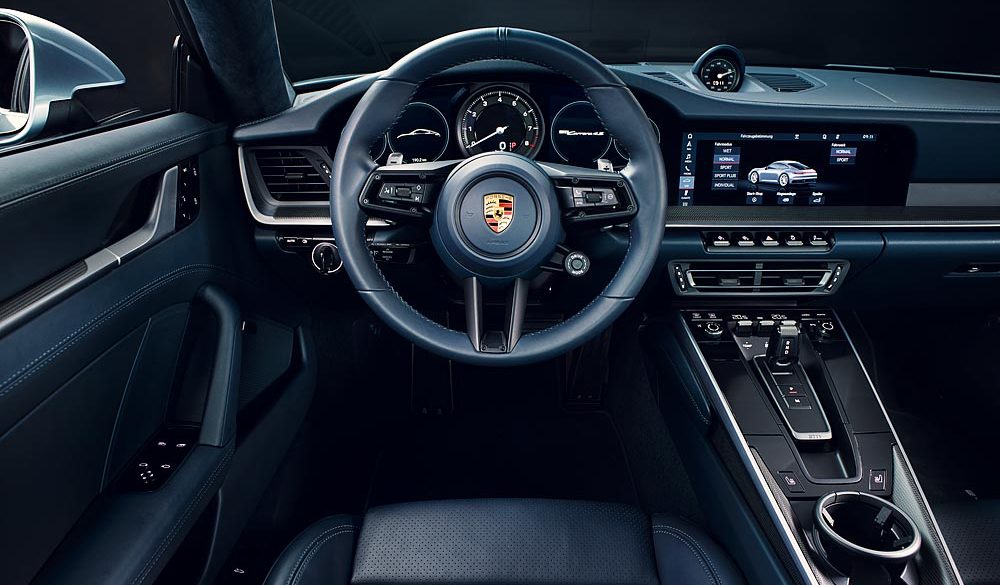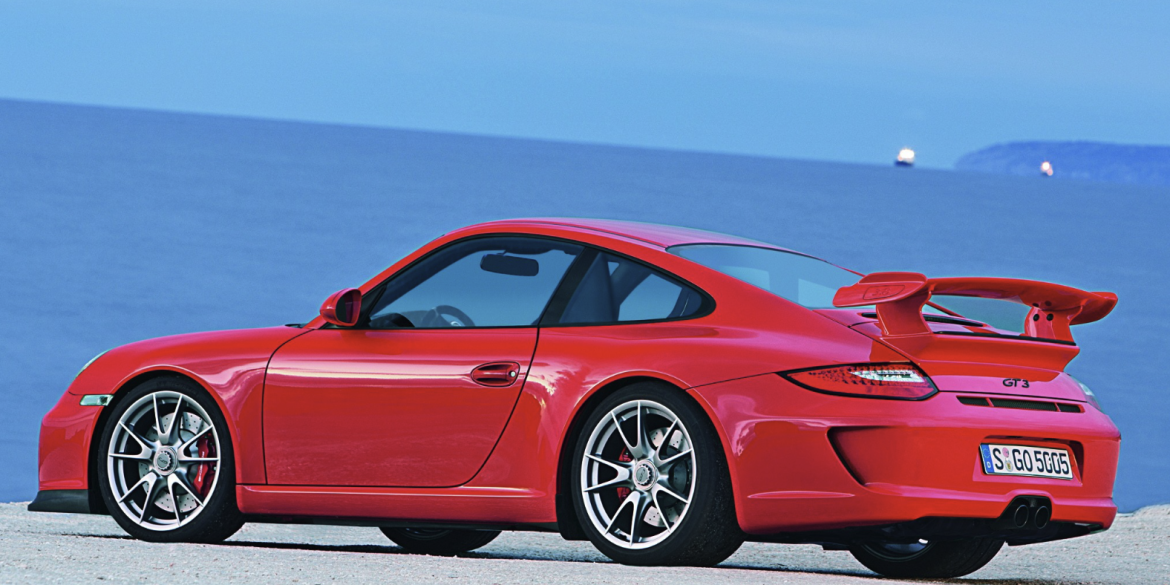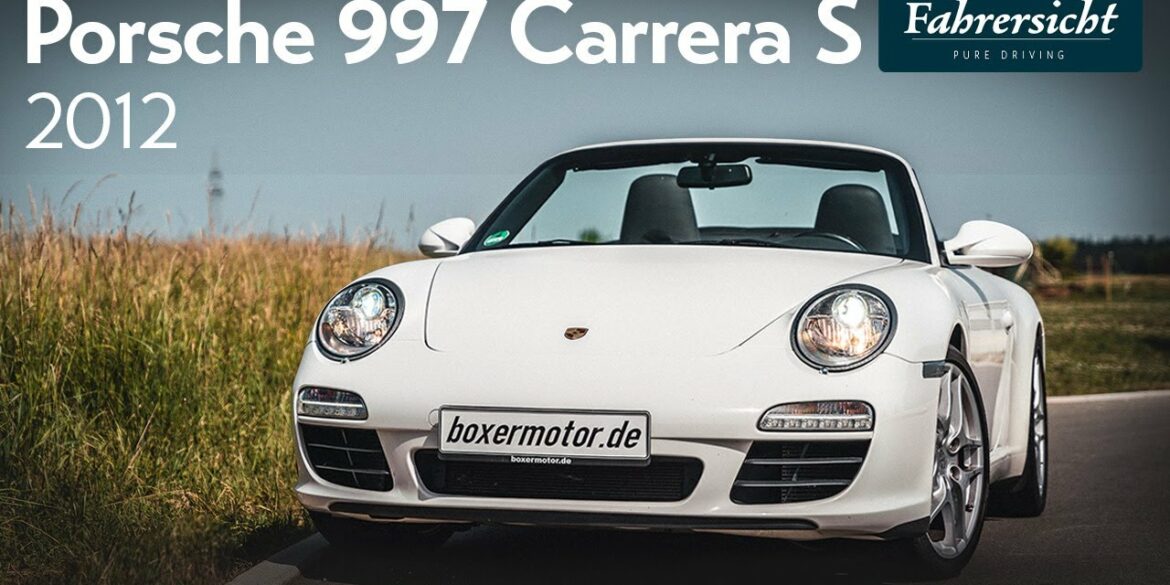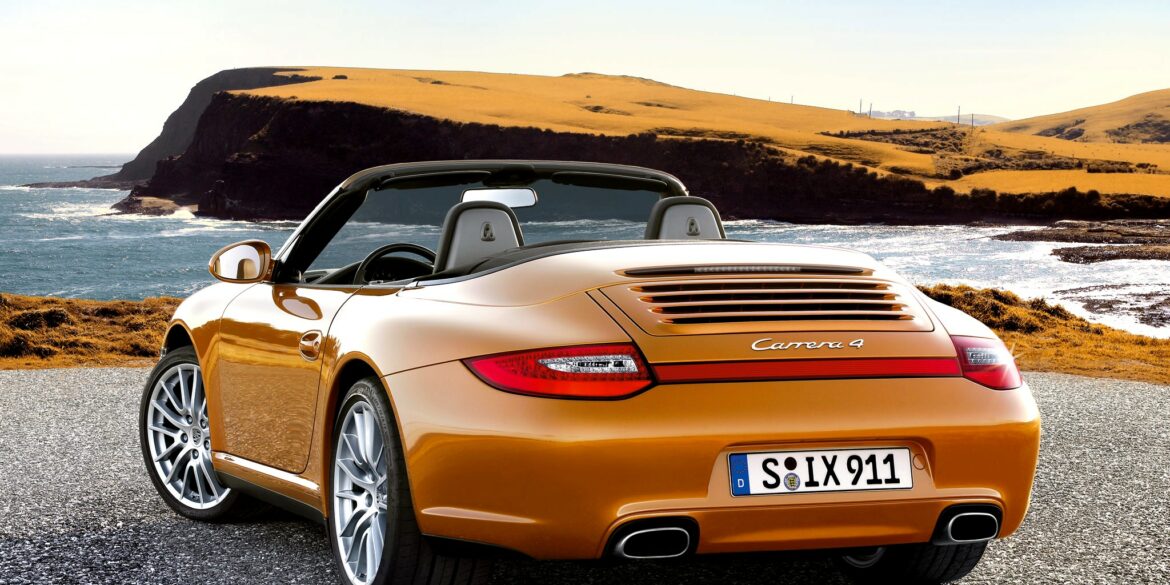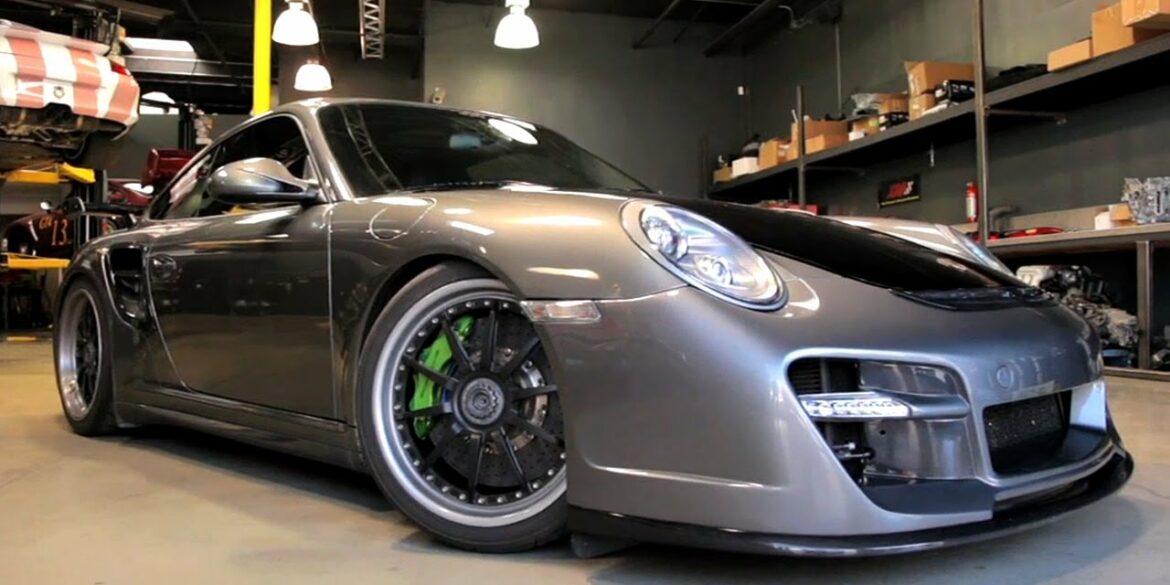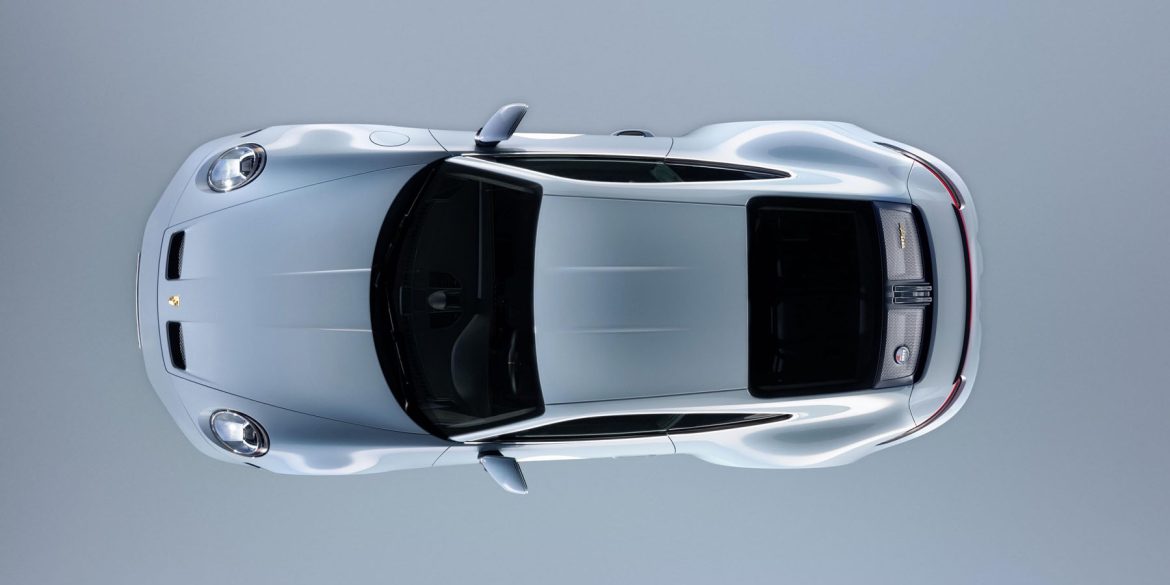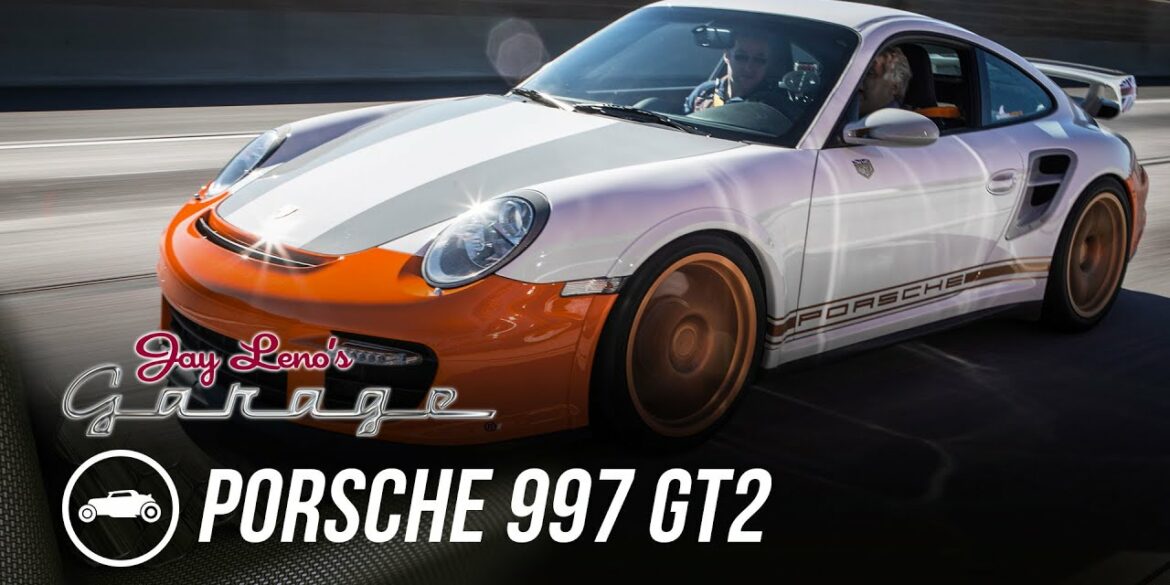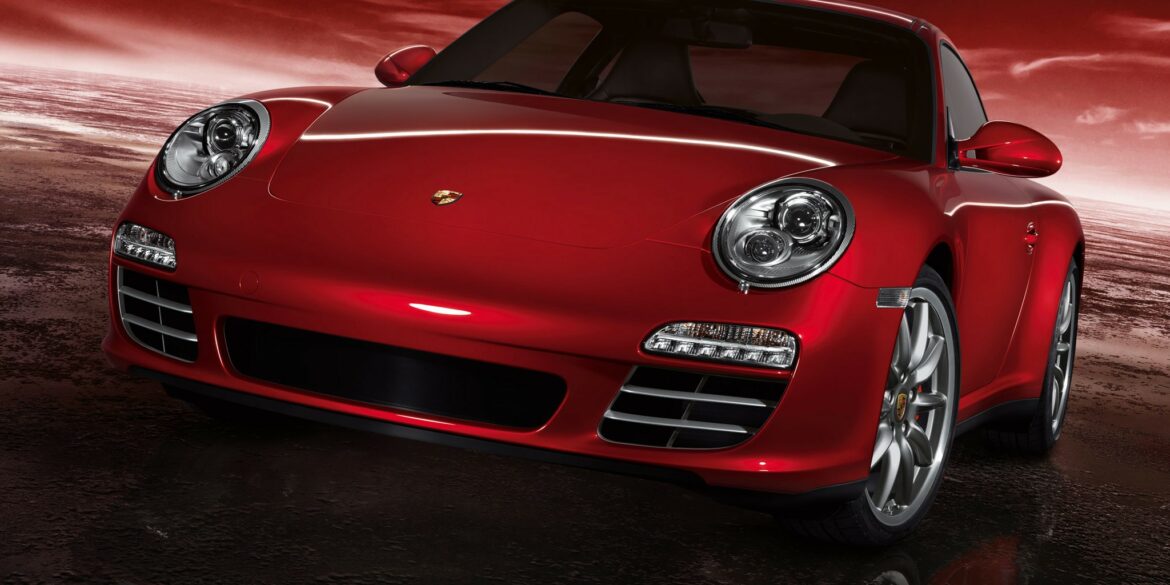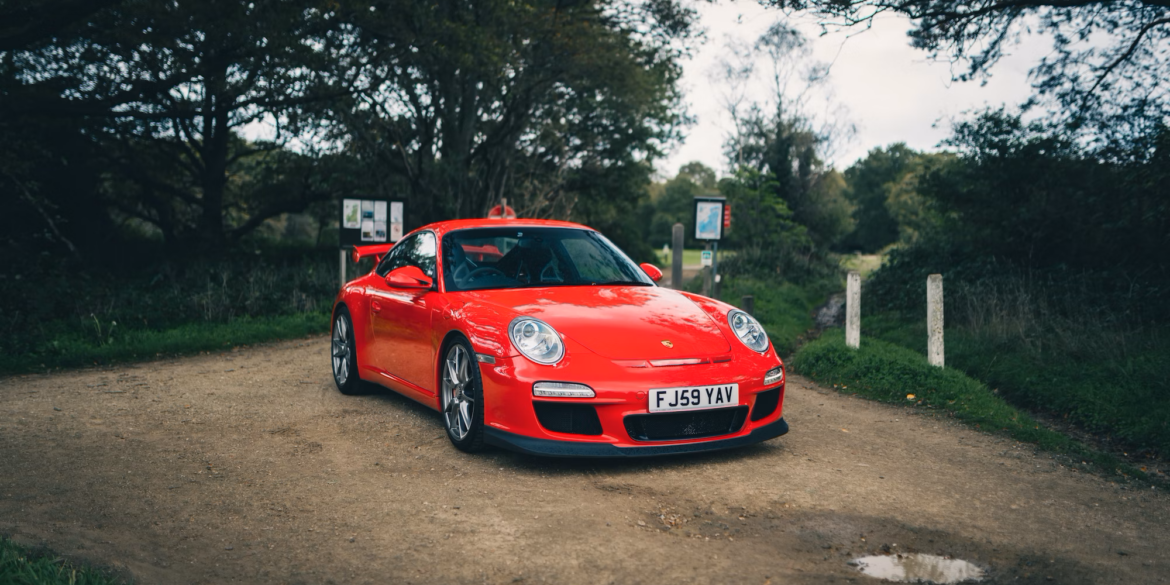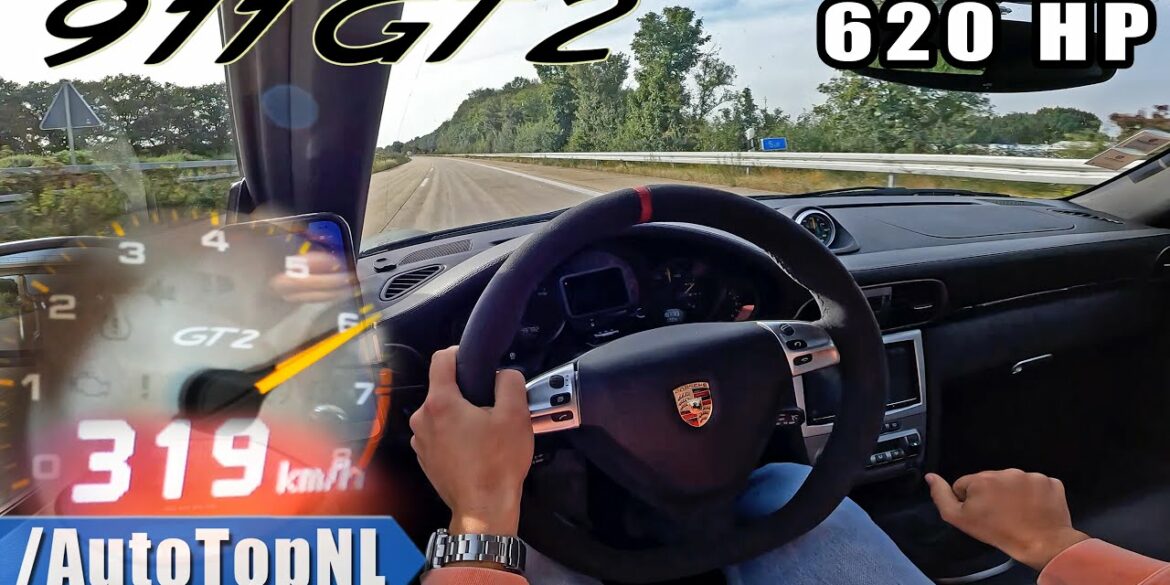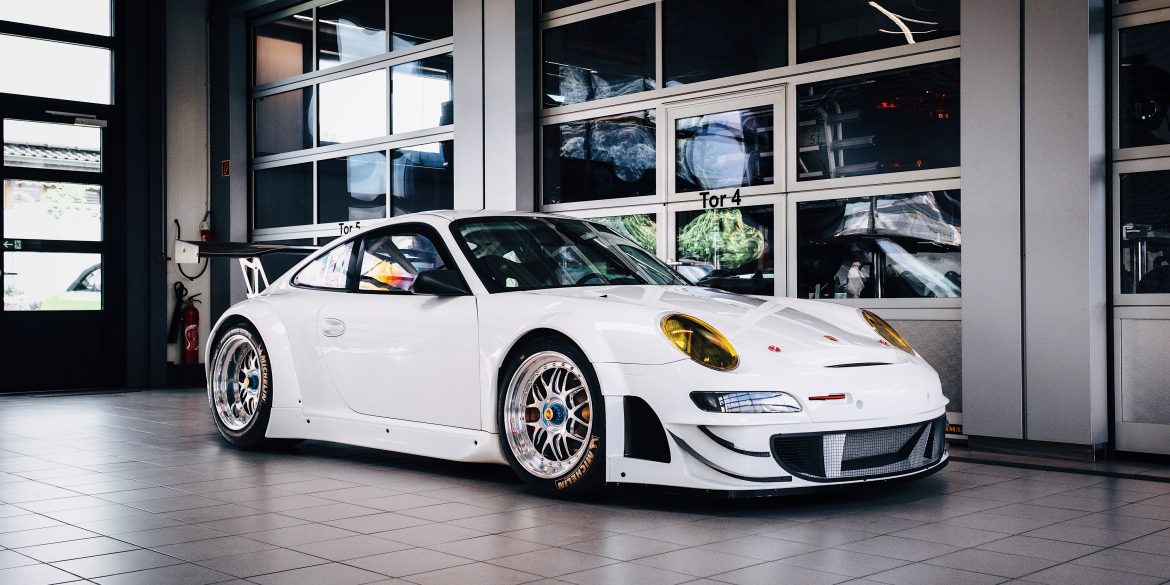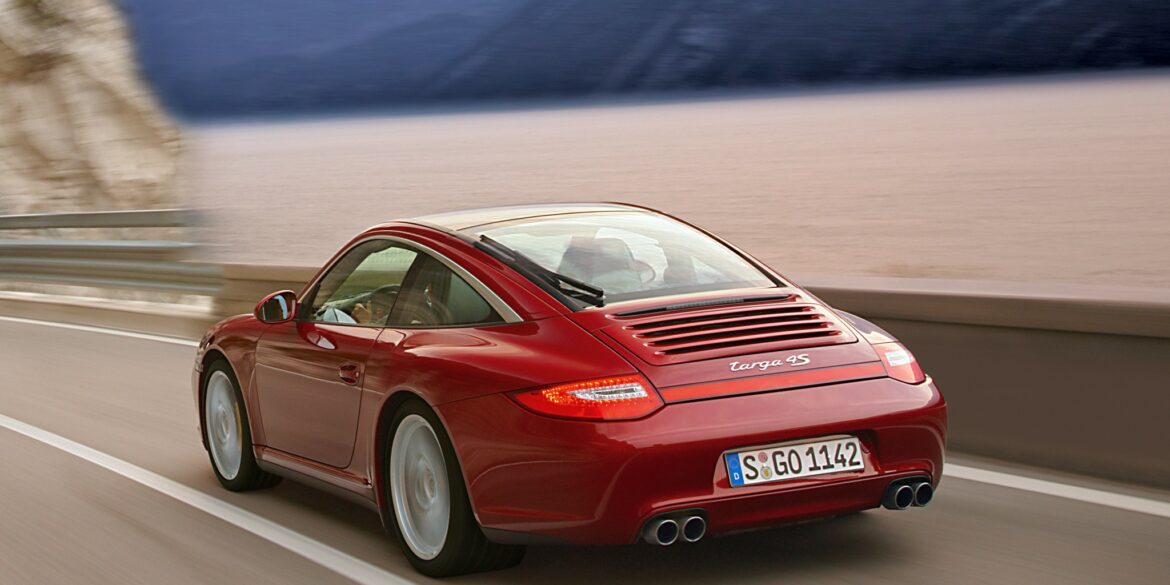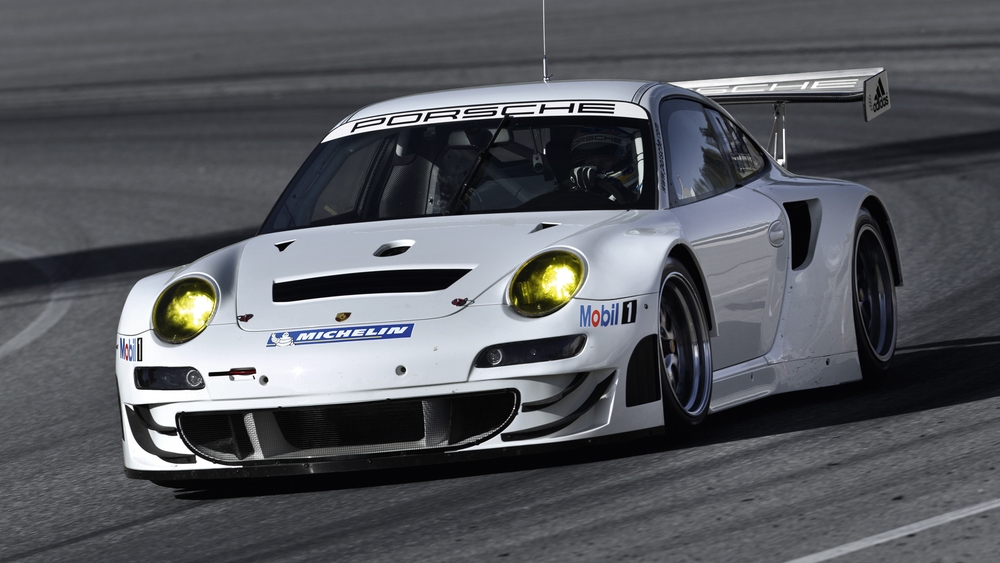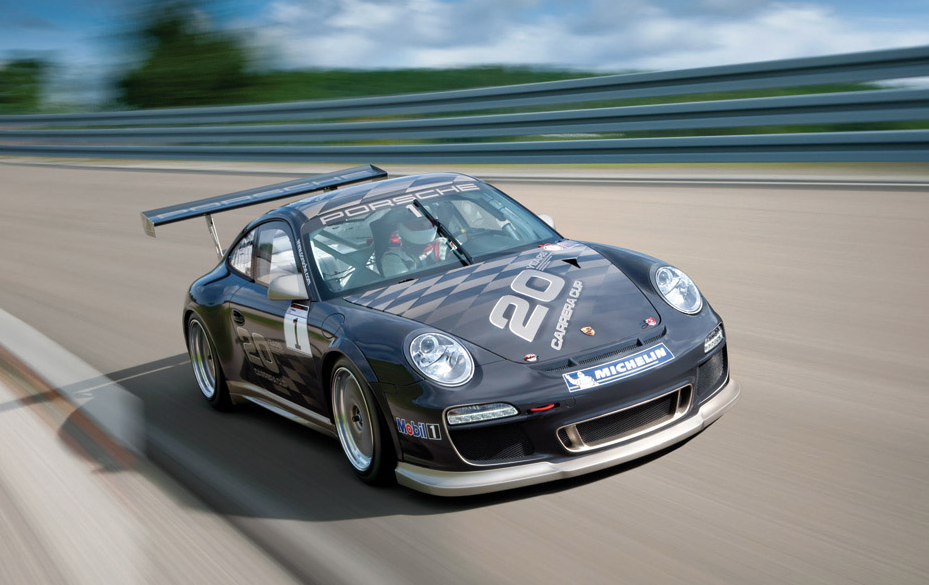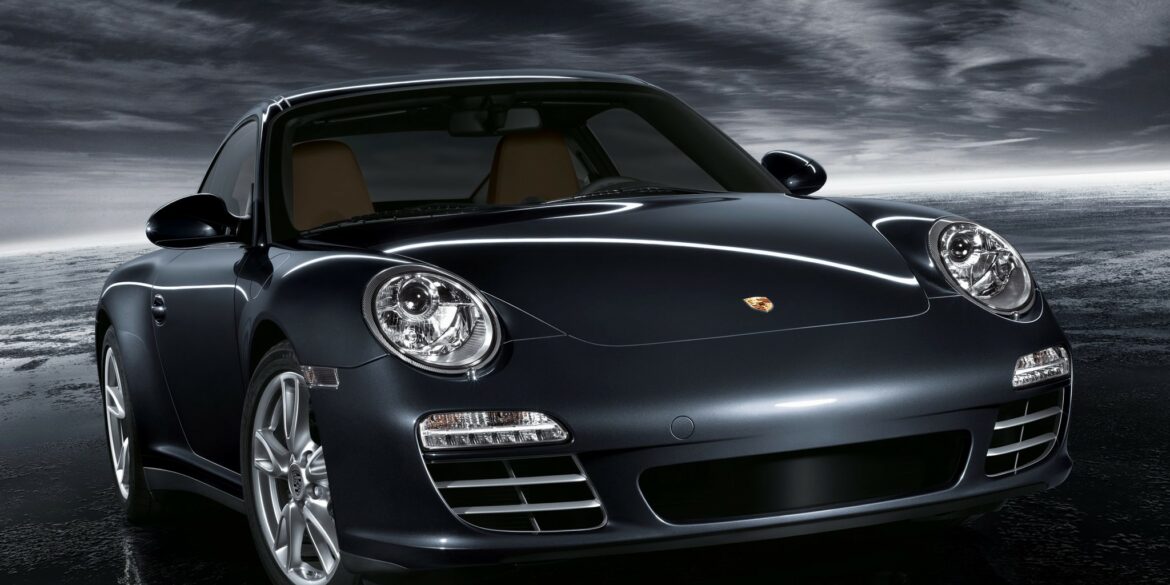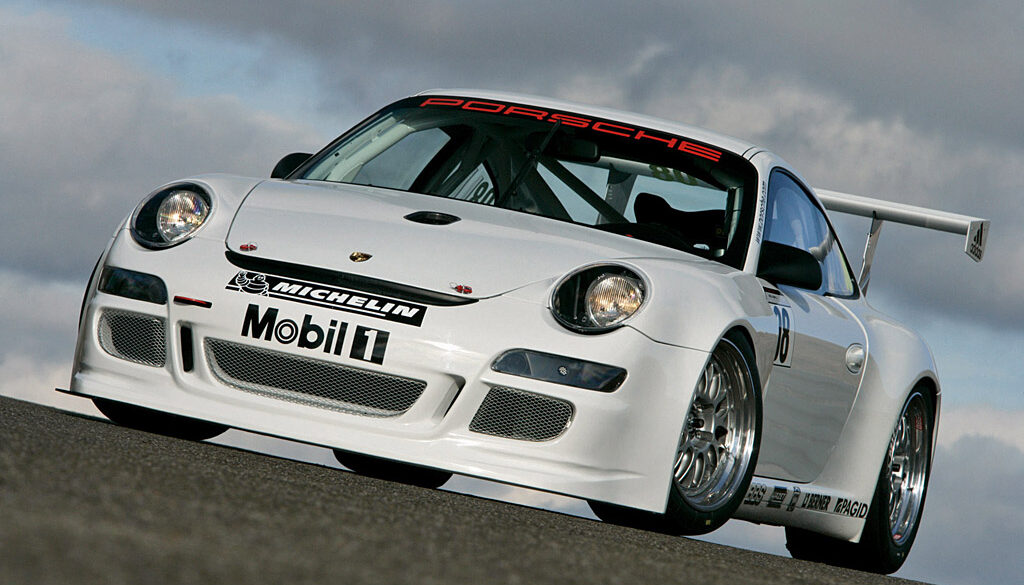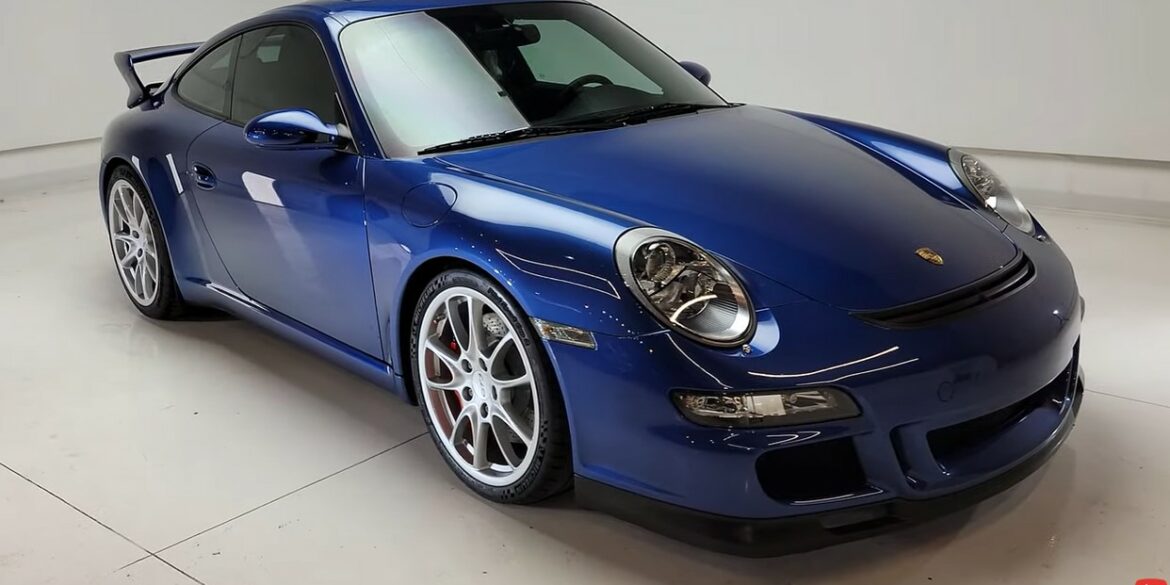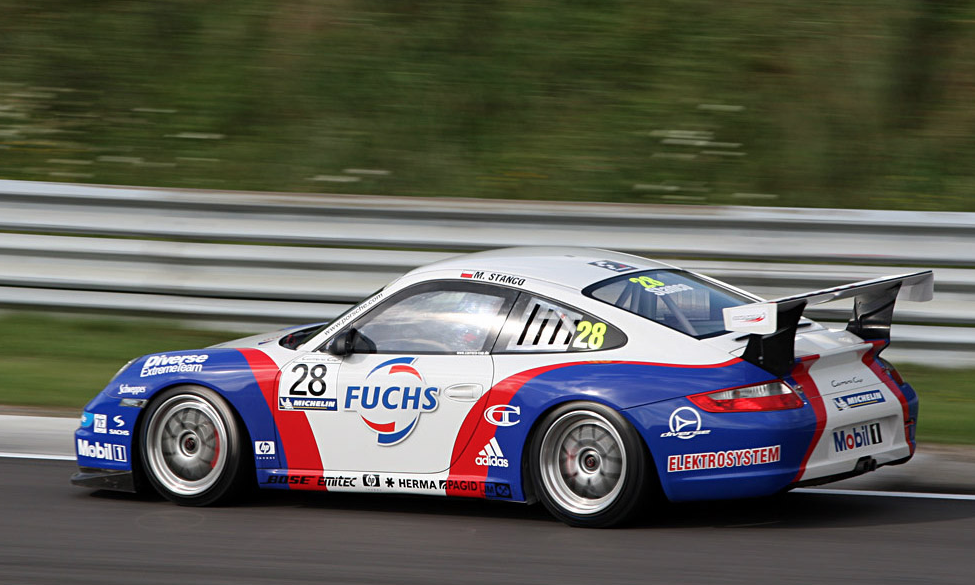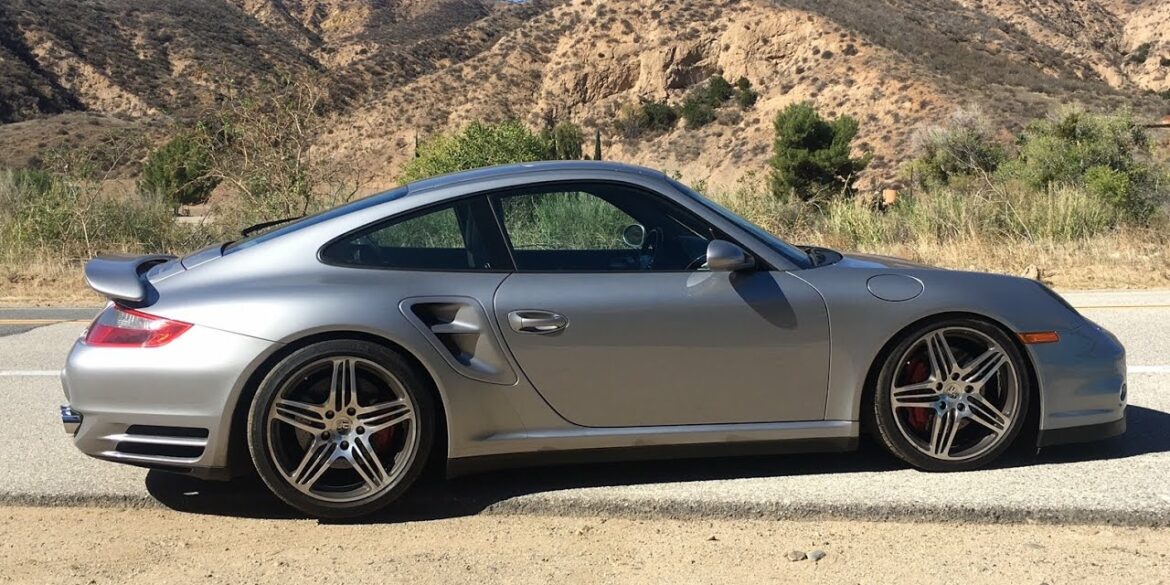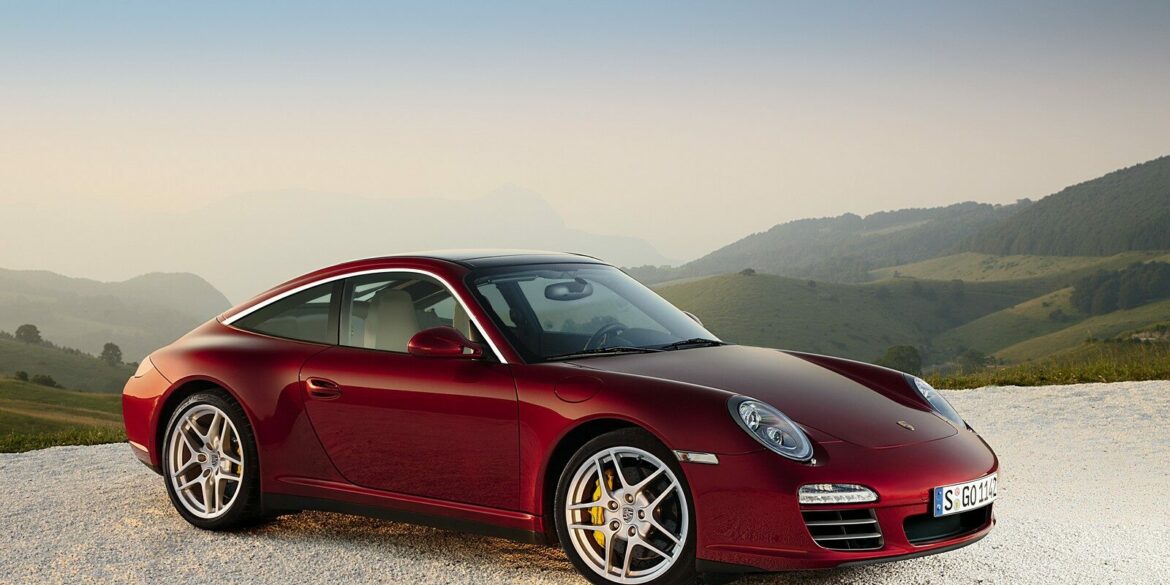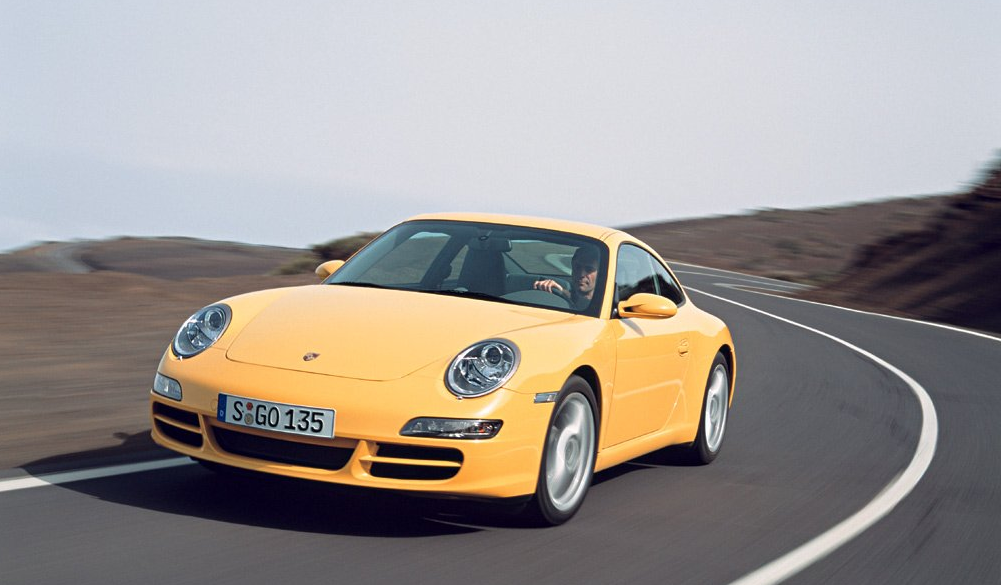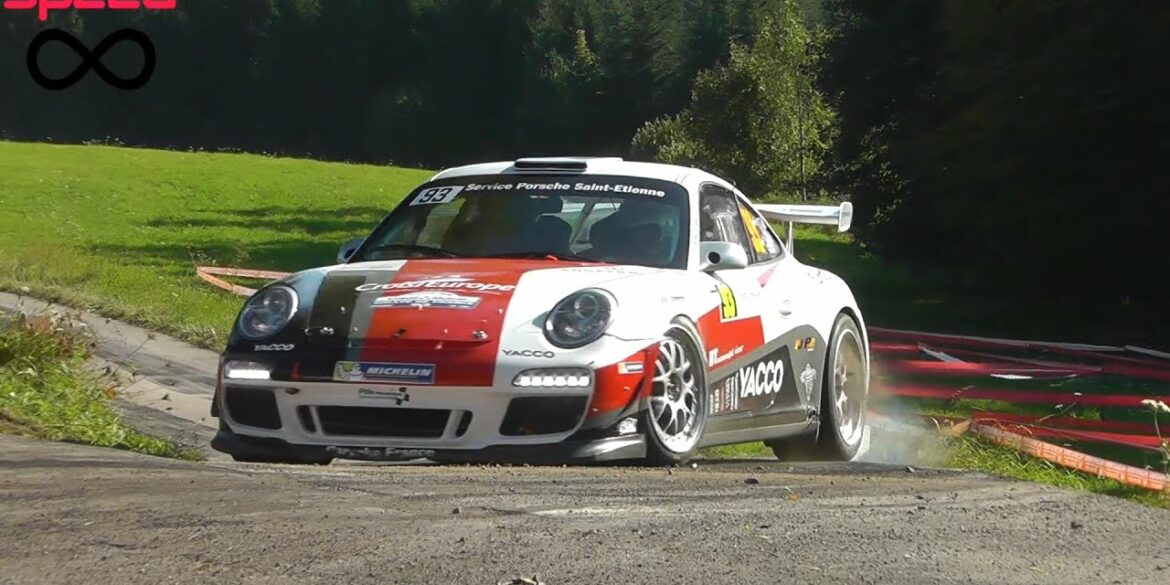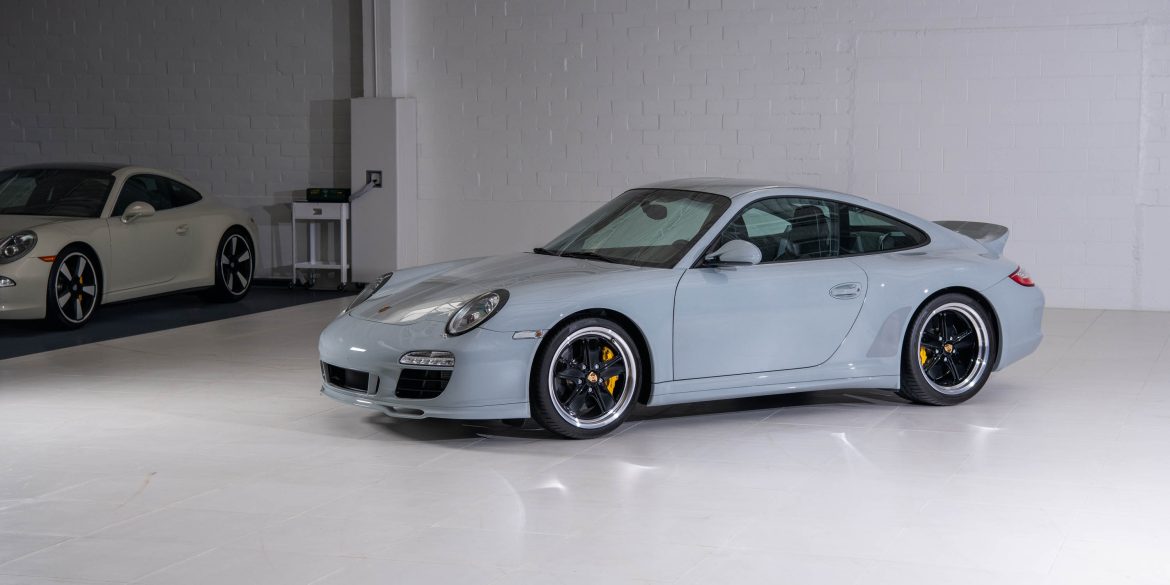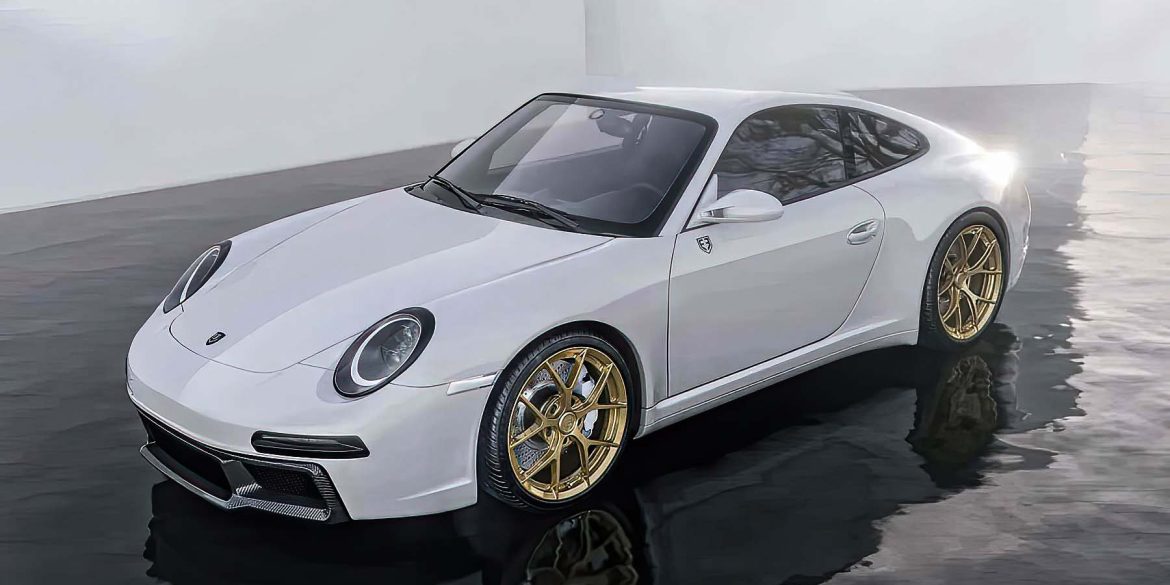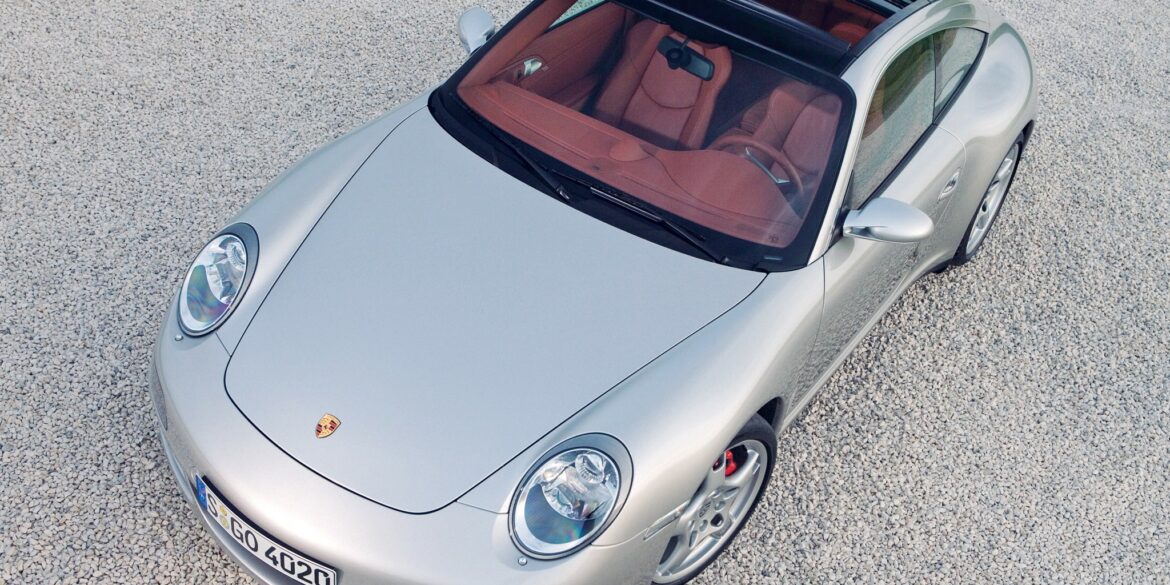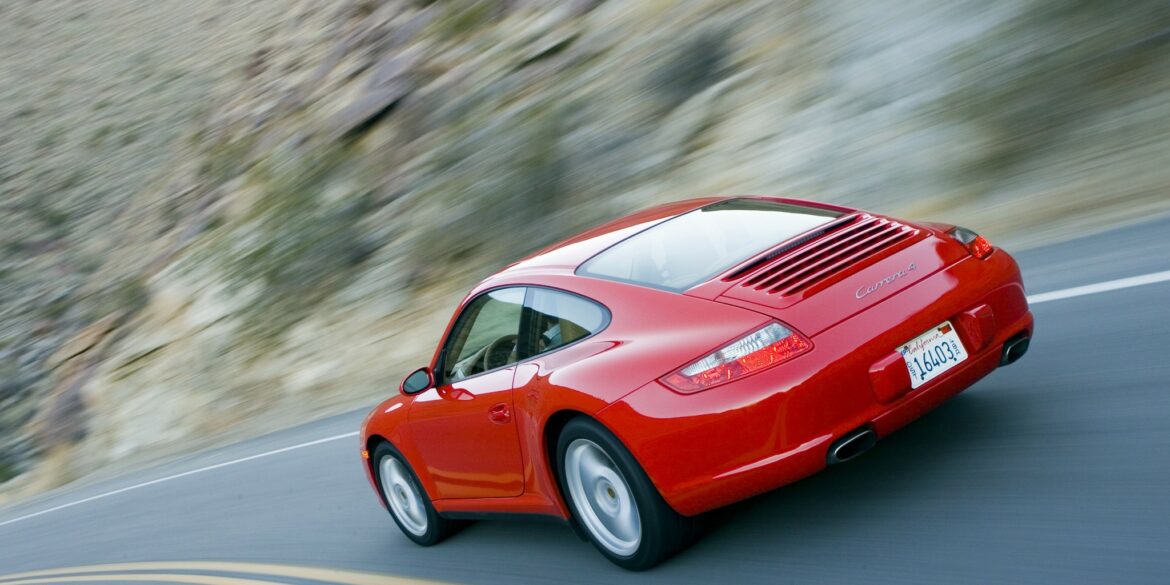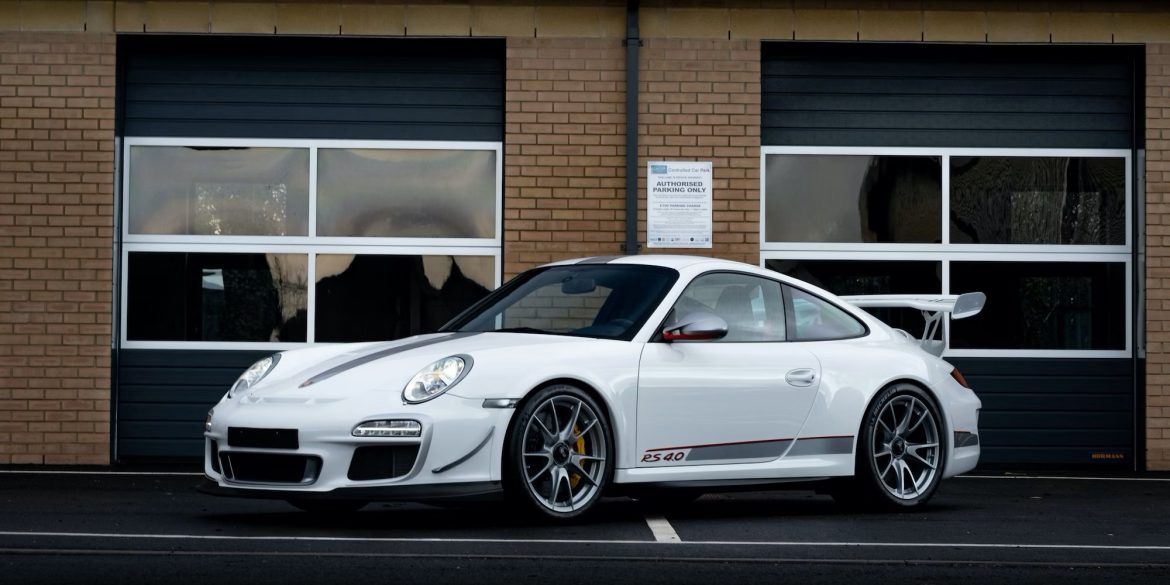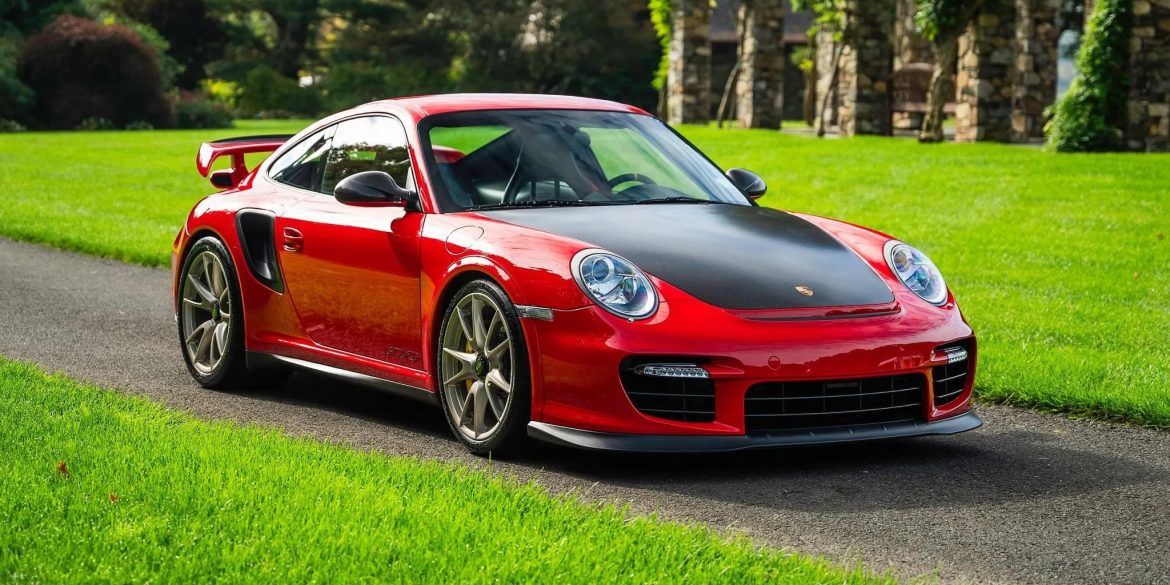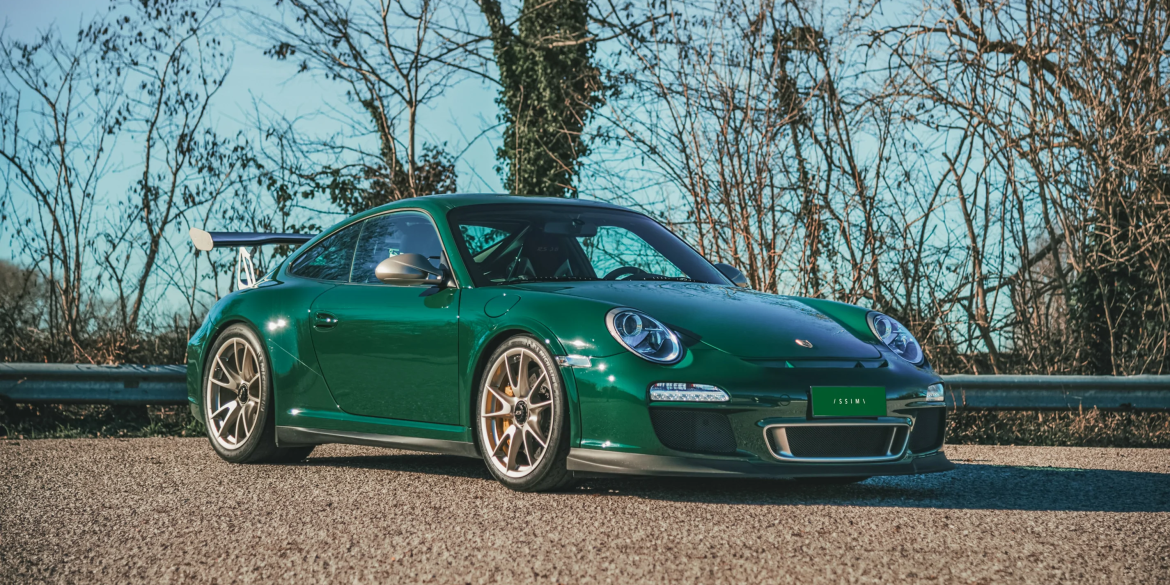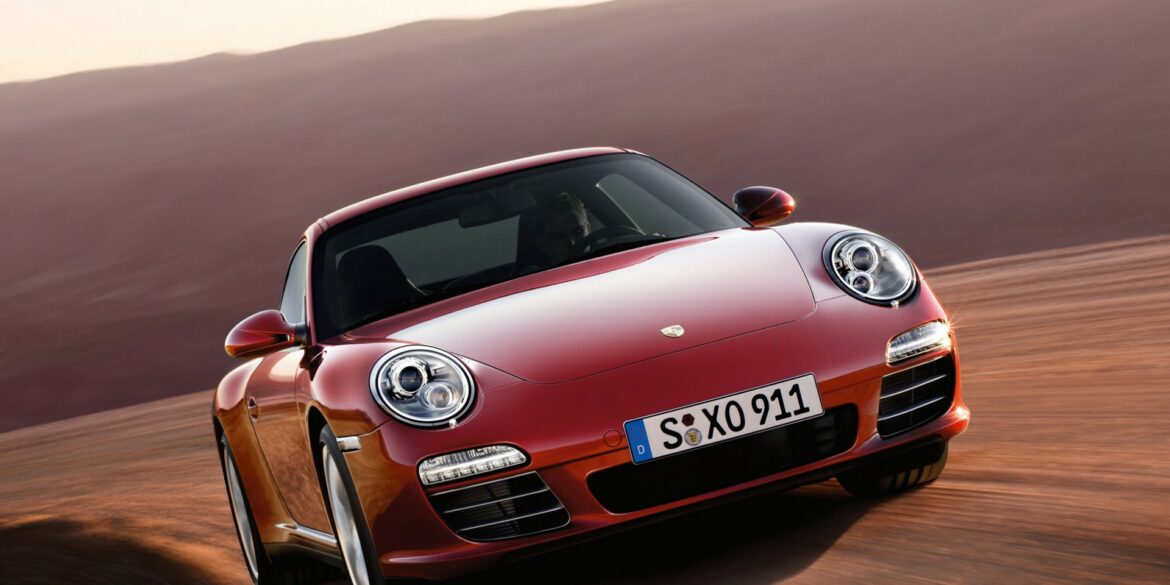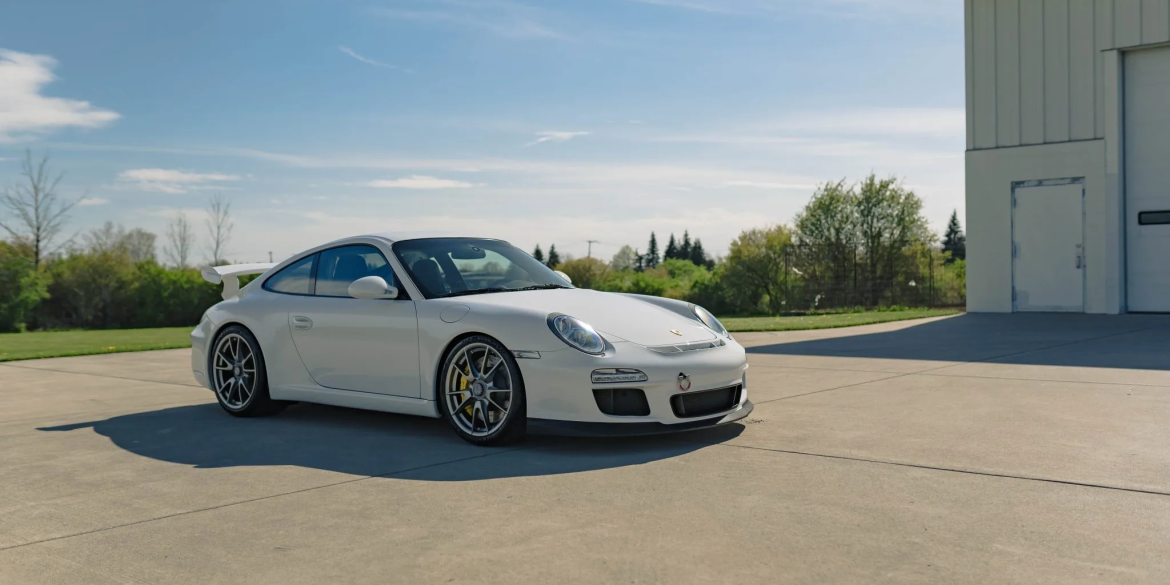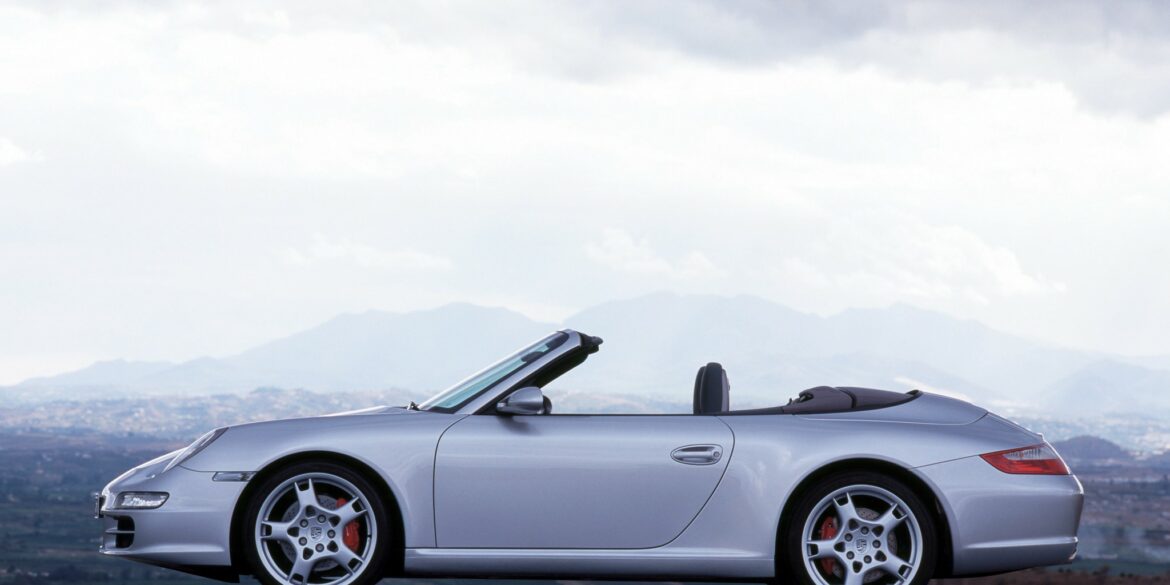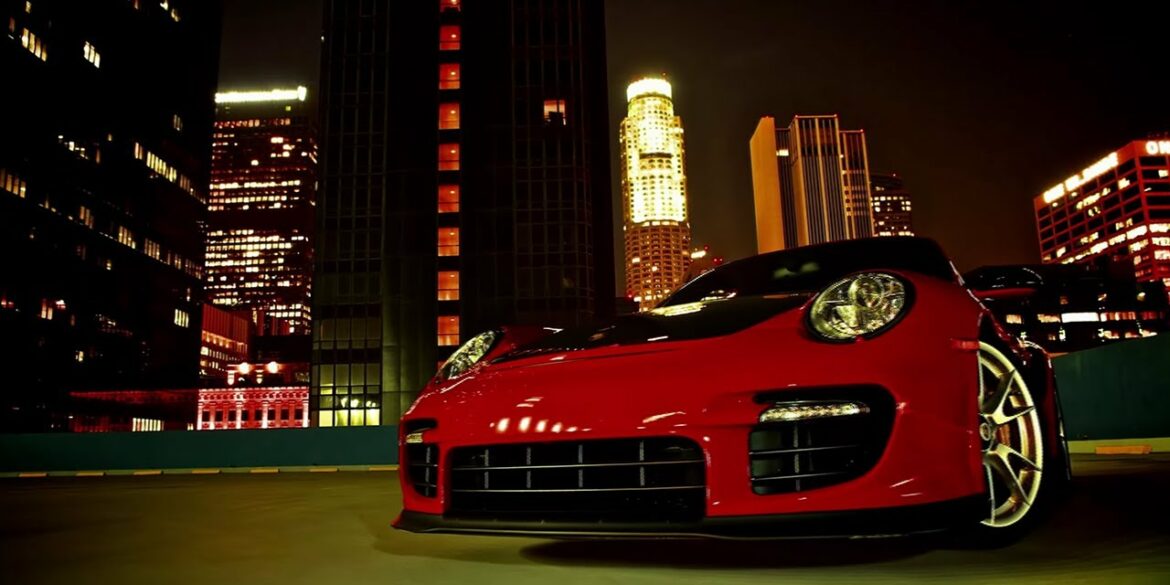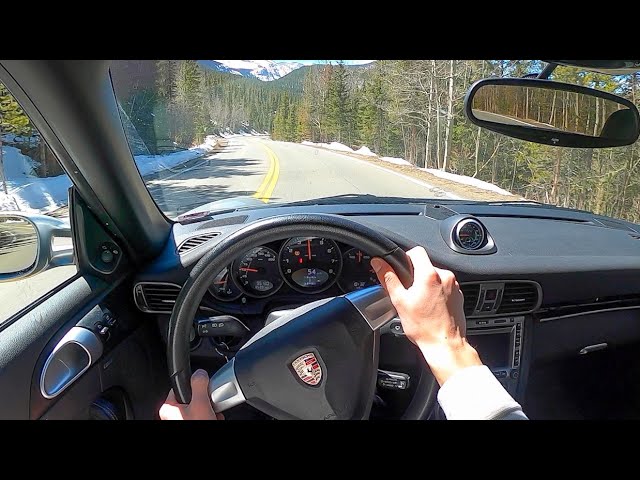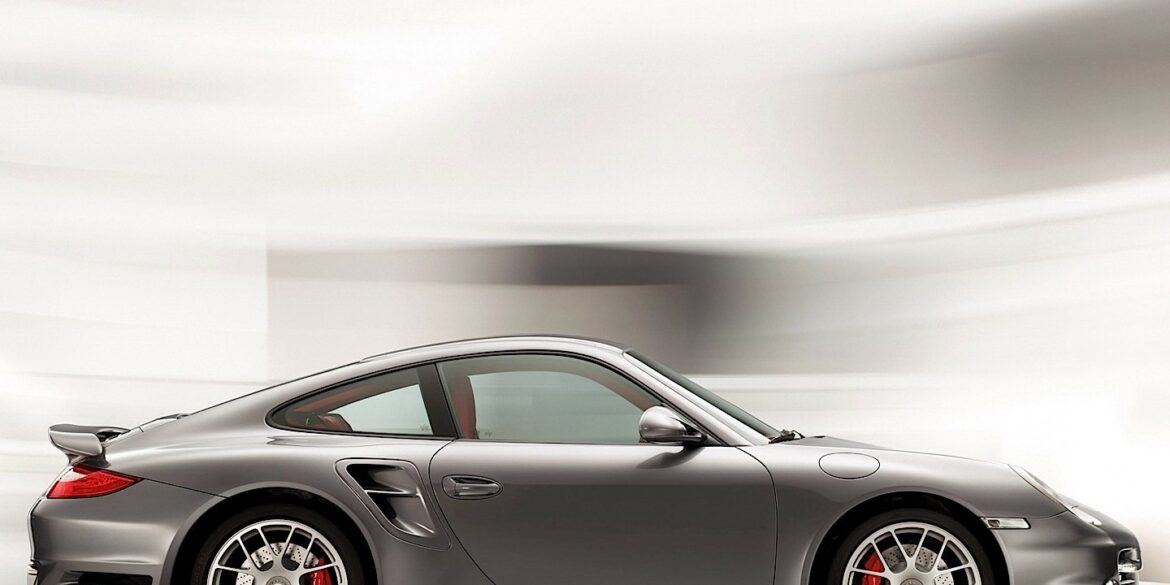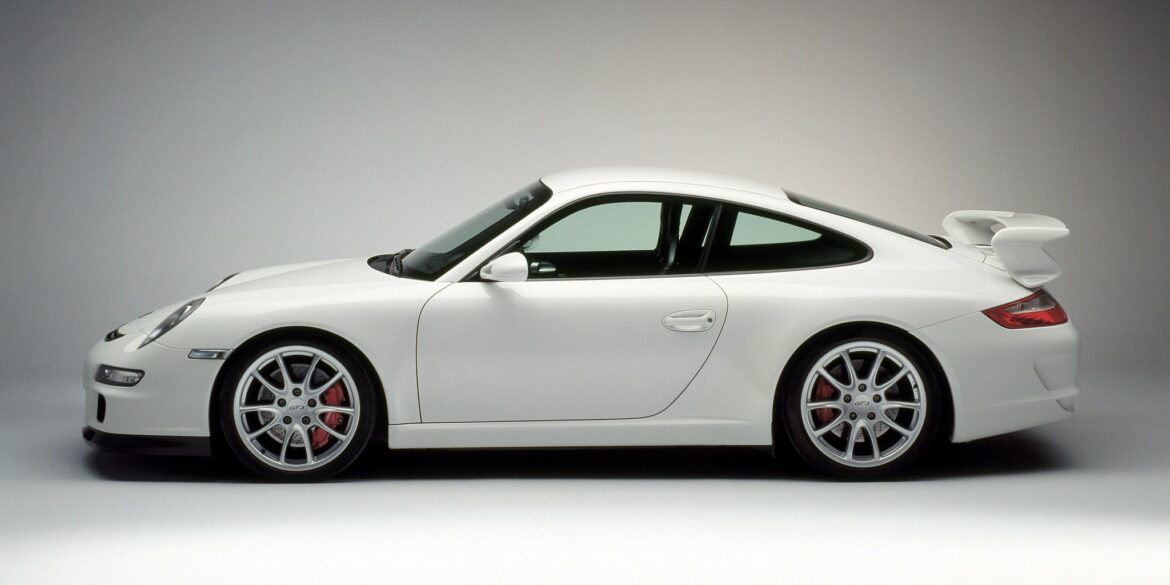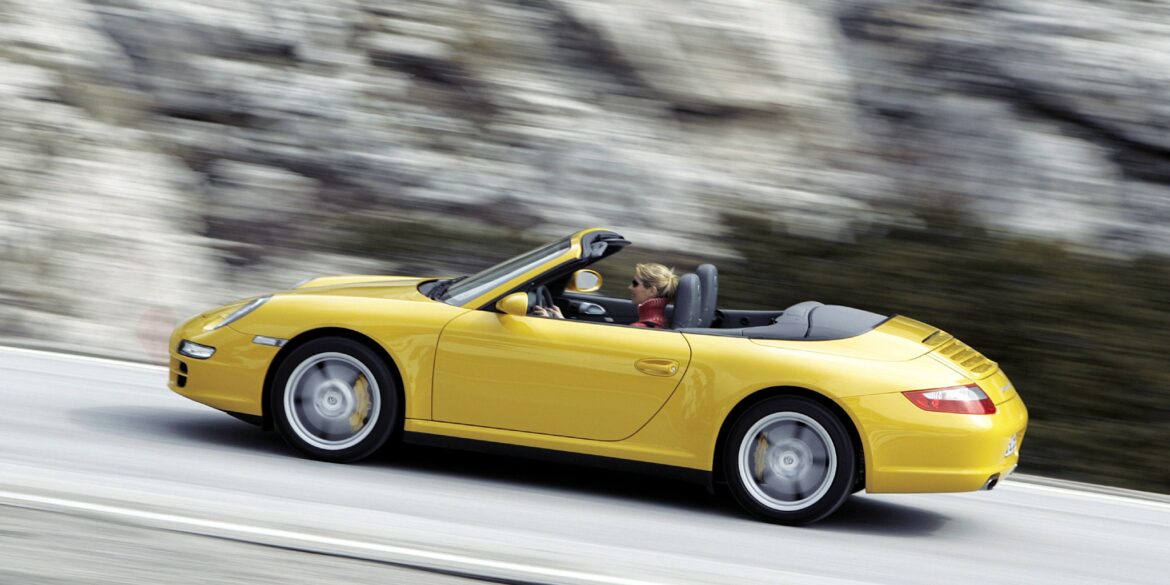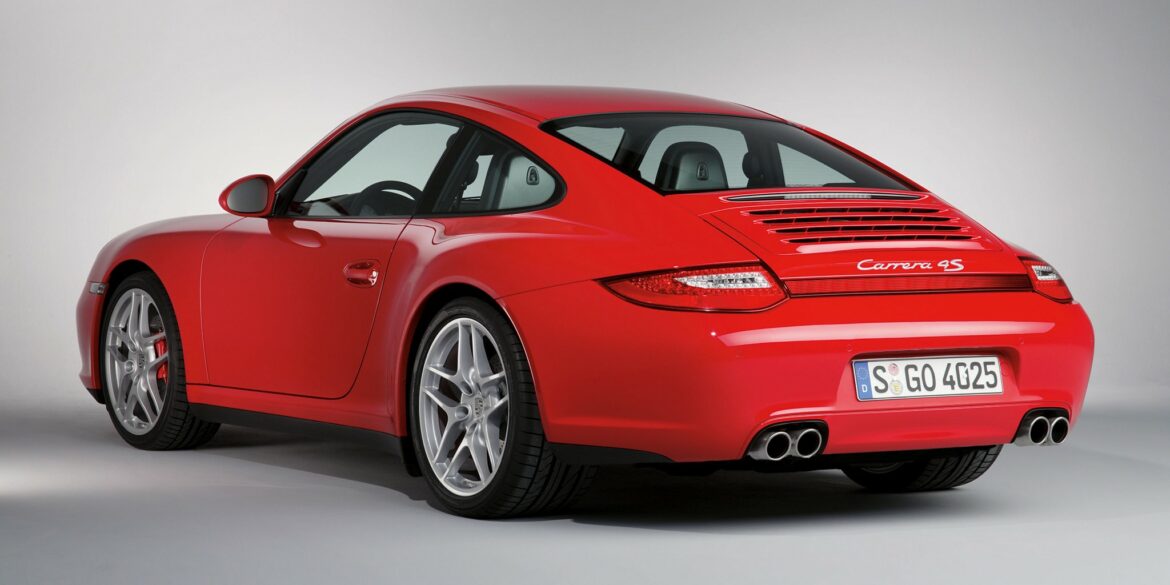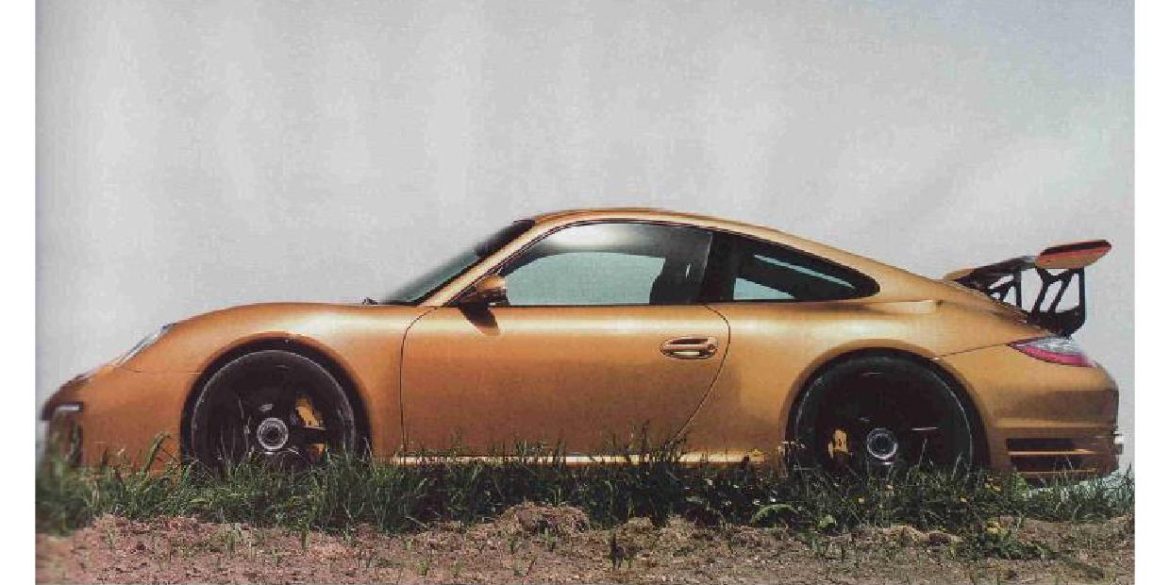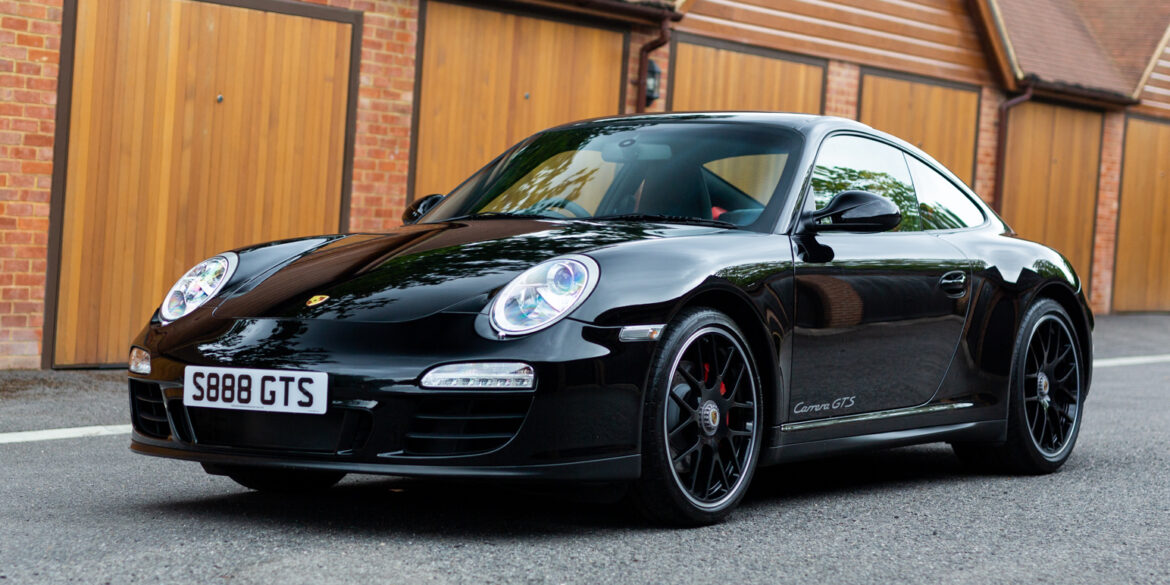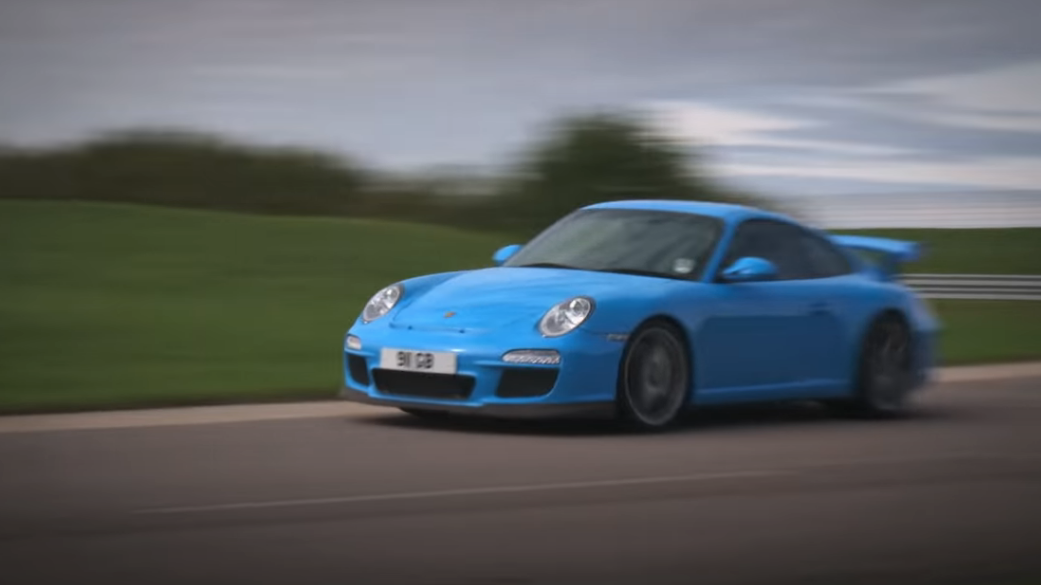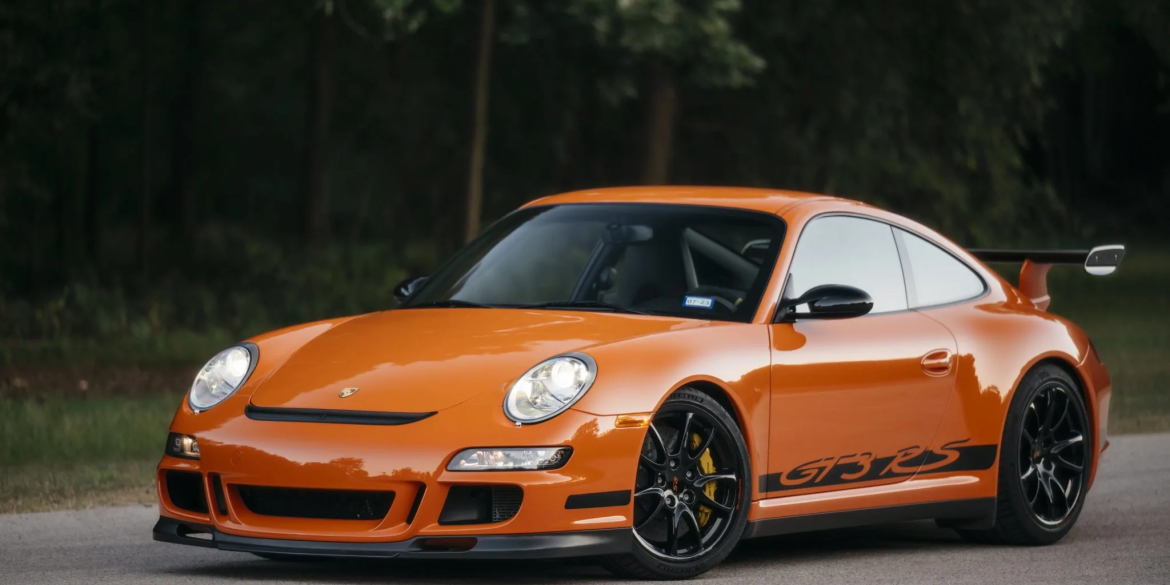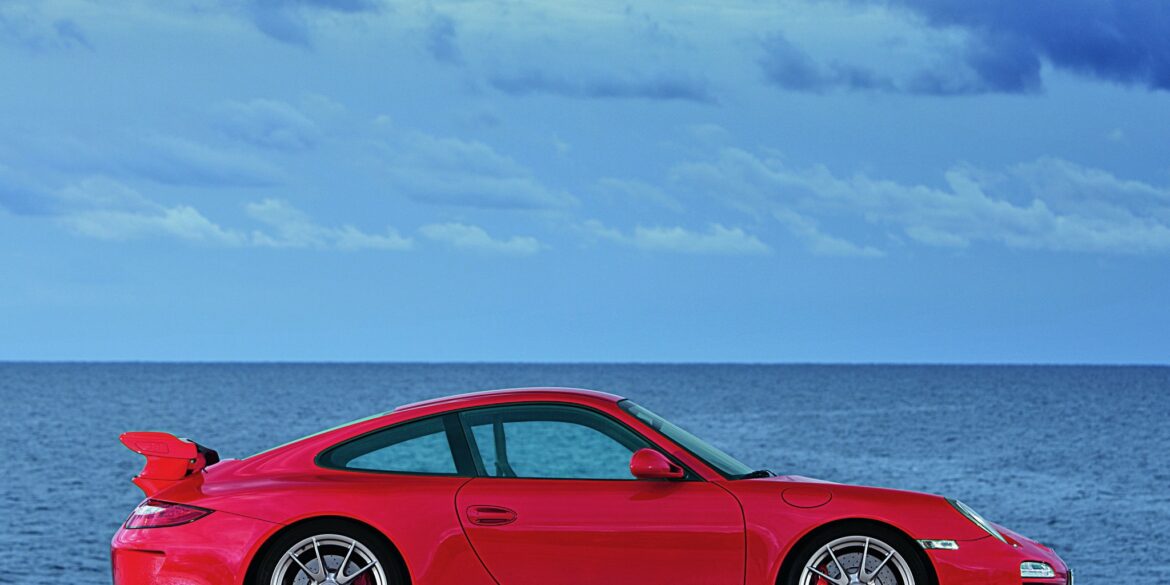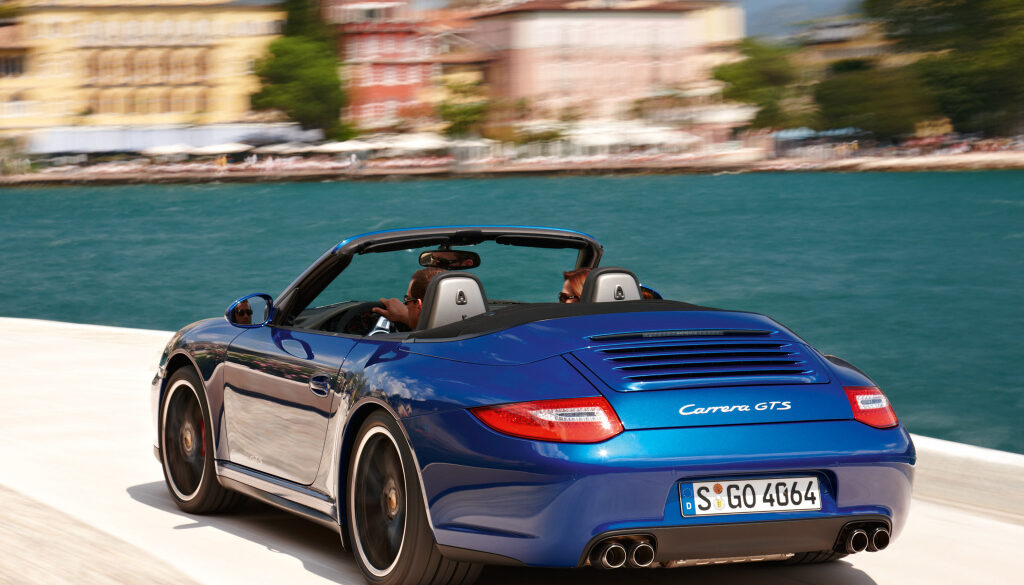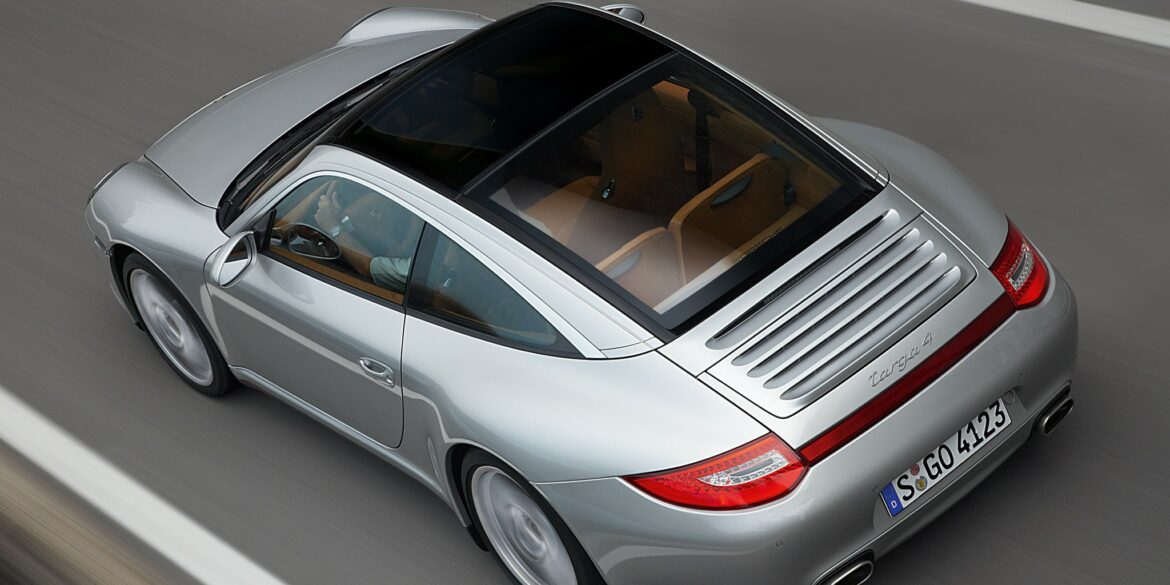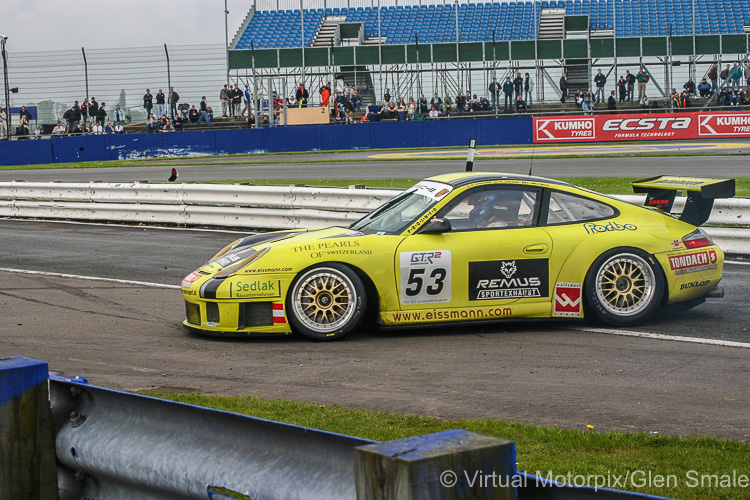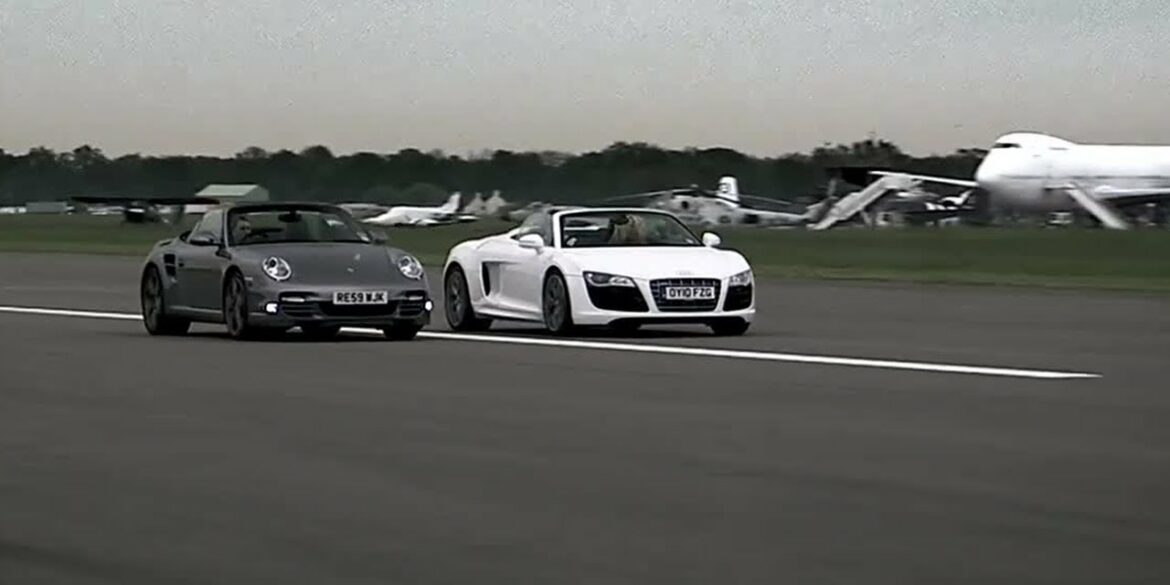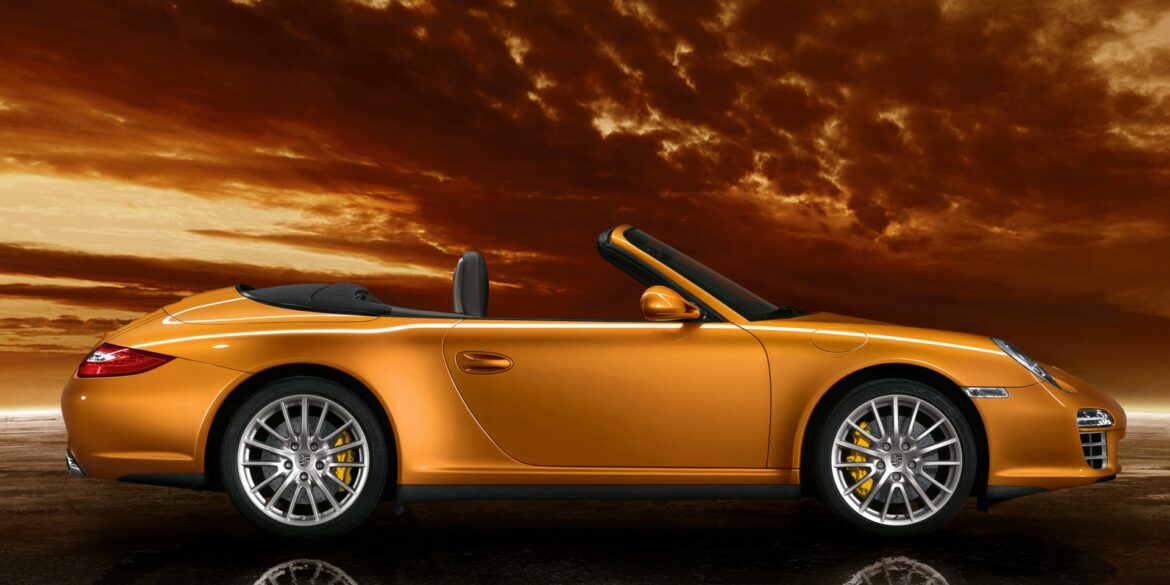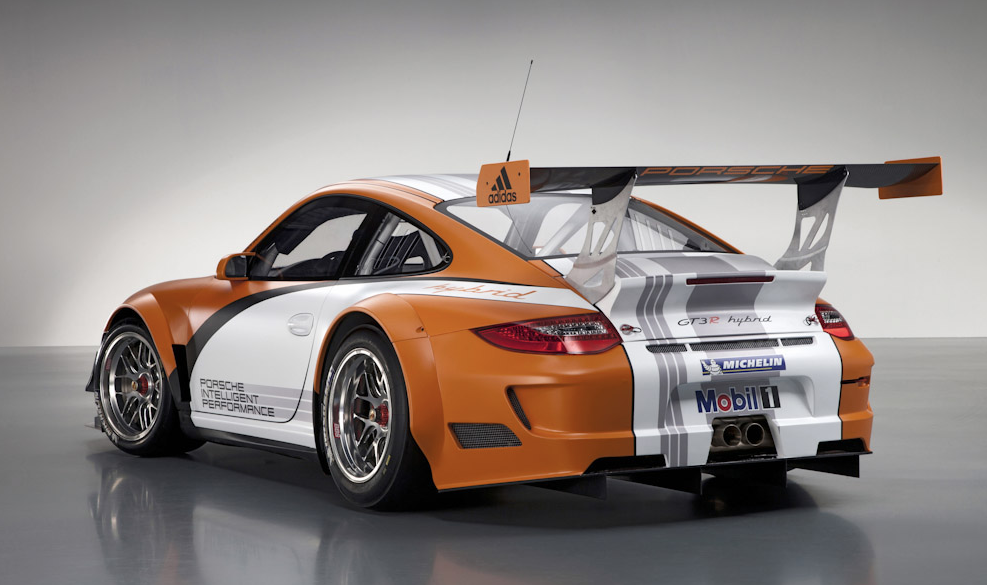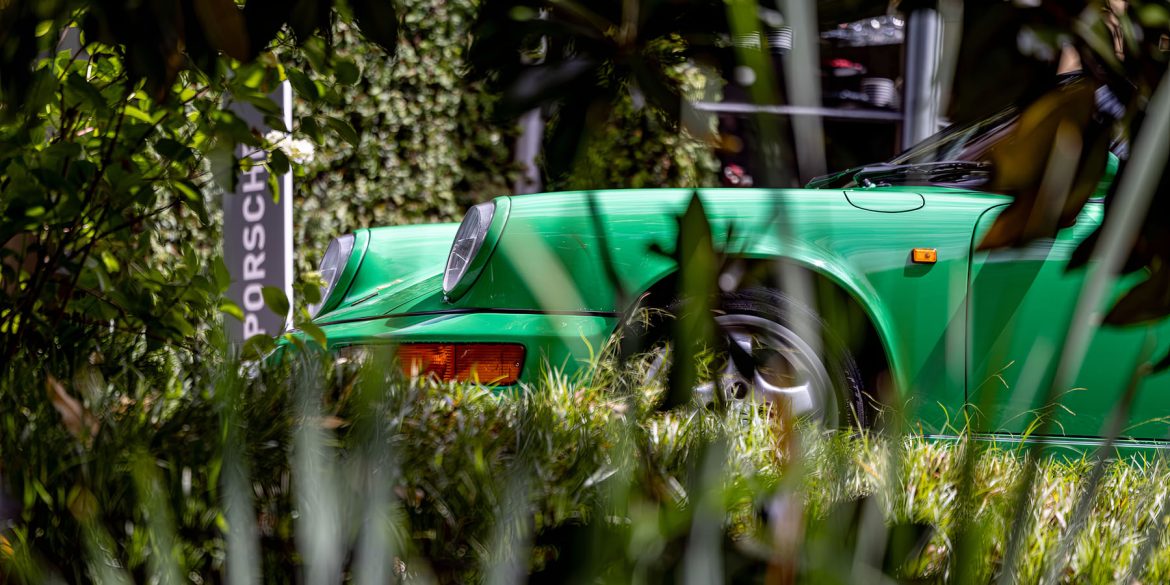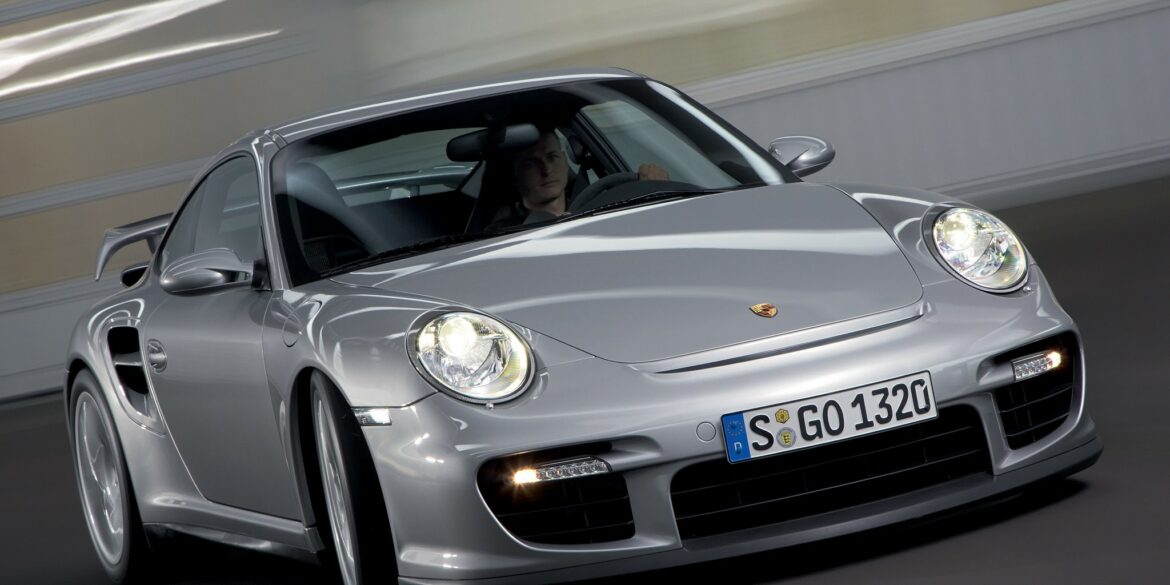Porsche 911 (997) Sales & Production Numbers In total, the Porsche 997 sold 212,964 units over its production life. It was hugely successful commercially and continued to transform the company into the powerhouse it is today. Please note that for the 997 model years we couldn’t get official numbers so...
Porsche 911 (997)
On May 7, 2004, Porsche announced that the new 911 generation will come as a 2005 model, as a successor to the 996 model. The 997 ended up being the most commercially successful 911 of all time, selling over 200,000 units during its production run. It marked the return to the classic 911 styling after the 996’s “fried egg” look. Today many consider it the quintessential 911 design and the last of the pure 911 sports cars. Some 45 iterations of road cars in total were made but the 997’s significance should not be measured purely on its commercial success. This was a milestone car for successfully introducing the dual clutch PDK transmission to Porsche’s 911, and also Porsche’s now ubiquitous and ingenious active suspension management or ‘PASM’. The 997 represented a significant relaunch of the 911 that included a major body restyling and interior update, while using much of the rolling chassis of the outgoing 996. At launch there were two uprated versions of the water cooled Carrera engines – the Carrera 3.6 and the Carrera S 3.8. See all of our Porsche 997 Research.
The Porsche 997 GT2 RS is a beast, a machine built to push limits. With a top speed of 209 MPH, it boasts a powerful 620 HP from its twin-turbocharged 3.6L engine, mirroring the Porsche GT1 prototype Le Mans-winning race car. Designed to reaffirm Porsche’s technological superiority, it aimed to...
Porsche has announced the introduction of the new 2007 911 GT3 RSR (type 997) for the American Le Mans Series and other world GT racing venues. The latest version of the most successful racing sports car in history is based on the street production model 911 GT3 RS (model year 2007) and was launched in late 2006. The 911 GT3 RSR has wider rear fenders and rear track to improve performance capabilities over its predecessor. The car has also been developed to fit into the 1,225 kg class. The new car is built in accordance with the ACO LMGT2 Regulations and the FIA Article 257.
Porsche 997.2 GT3 RS Video Review This is the Porsche 997.2 GT3 RS and we’re back for Season Two of Modern Classics with one of the best drivers Porsches ever made! With 444bhp from the last of the Porsche Mezger engines and weighing around1370kg the Porsche GT3 RS is highly...
Extreme perfectly characterizes the 2011 Porsche 911 GT2 RS. Incredibly fast with a factory-rated top speed of 209 MPH, this exhilarating vehicle generates a robust 620 HP from its twin-turbocharged 3.6L engine, tuned to the same specification as the Porsche GT1 prototype Le Mans-winning race car. Built with the singular...
Le Mans 24 Hours, 16-17 June 2007: Busy grid just before the start of the race Porsche introduced their new 3.8-litre 911 GT3 RSR (Type 997) for the 2007 season, replacing the 3.6-litre 996 GT3 RSR. In many ways, this new model was a better all-round race car, being more...
No Subscription? You’re missing out Get immediate ad-free access to all our premium content. Get Started Already a Member? Sign in to your account here....
No Subscription? You’re missing out Get immediate ad-free access to all our premium content. Get Started Already a Member? Sign in to your account here....
No Subscription? You’re missing out Get immediate ad-free access to all our premium content. Get Started Already a Member? Sign in to your account here....
No Subscription? You’re missing out Get immediate ad-free access to all our premium content. Get Started Already a Member? Sign in to your account here....
Porsche 911 Spare Parts Catalogs (997, 2005 – 2012 Model Year) These official Porsche PET Diagrams and codes for the Type 997 Porsche 911 (2005 – 2012) models. Free for you to download and view. Whether you are working on your own Porsche 911 and need the total parts guide...
Delivering even more engine power, lower weight and shorter transmission ratios, as well as upgraded body and suspension components than all previous GT3s, the 997.2 Porsche 911 GT3 RS sets the foundation for homologating the race version of the 911 GT3. The heart of the new, uncompromising GT3 RS is the power...
No Subscription? You’re missing out Get immediate ad-free access to all our premium content. Get Started Already a Member? Sign in to your account here....
No Subscription? You’re missing out Get immediate ad-free access to all our premium content. Get Started Already a Member? Sign in to your account here....
The 996-generation GT3 RS wasn’t available in the U.S., but that changed with the 997-generation. The standard 997 GT3 made its debut at the 2006 Geneva Motor Show, and shortly after, the GT3 RS entered production in 2007. This model became highly sought after globally, competing with the likes of...
No Subscription? You’re missing out Get immediate ad-free access to all our premium content. Get Started Already a Member? Sign in to your account here....
This is the best 911 Porsche has ever made. The headline power figure and the ability to rev to 8,500 snare your attention, but the most staggering aspect of this engine is actually its tractability. Mid-range lunge is marvelous, even if the peak number of 339 pound-feet doesn't sound huge in the context of short gear ratios, lightweight, and a compact frontal area. In third gear, the way this thing flies between 4,500 and 8,500 rpm is scintillating. Plus, the utter progression of the delivery makes it vastly easier to take advantage of compared to the GT2's ridiculous turbo surge. This is one special car.
Inspired by the 918 Spyder, Porsche introduced the 911 Turbo S Edition 918 Spyder that was mechanically identical to the standard 997 Turbo S – but accented with bright green trim, decals, and even brake calipers to match the similar trim on the 918. Contemporary accounts suggested that Porsche would...
Porsche 997 GT3 RS Review The Generation 2 version of the Porsche GT3 RS (997.2) is considered by many to be the best version of the 911 ever. It is the last 911 RS model to have manual gearbox, it’s the last to use the Le Mans derived Mezger racing...
No Subscription? You’re missing out Get immediate ad-free access to all our premium content. Get Started Already a Member? Sign in to your account here....
This 2011 Porsche 911 GT3 RS 4.0, listed for sale on Bring a Trailer, is one of just 600 examples built and has only 144 original miles on the odometer. Part of the 997 generation, the GT3 RS 4.0 holds a revered spot in Porsche’s Rennsport lineage. Much like the...
Porsche 911 (997) (2004 – 2012) Story & History Type 997 – The 6th Generation Porsche 911 Official photos: 2004 May 7 / Premiere: 2004 July 16 at 9:11 pm at all the 85 Porsche centres in Germany / Market launch: 2004 July 17 On May 7, 2004, Porsche announced...
No Subscription? You’re missing out Get immediate ad-free access to all our premium content. Get Started Already a Member? Sign in to your account here....
Join Jethro Bovingdon as he drives through beautiful sceneries of Scotland in a Porsche 911 (997) GT3 RS 4.0. ...
No Subscription? You’re missing out Get immediate ad-free access to all our premium content. Get Started Already a Member? Sign in to your account here....
No Subscription? You’re missing out Get immediate ad-free access to all our premium content. Get Started Already a Member? Sign in to your account here....
No Subscription? You’re missing out Get immediate ad-free access to all our premium content. Get Started Already a Member? Sign in to your account here....
No Subscription? You’re missing out Get immediate ad-free access to all our premium content. Get Started Already a Member? Sign in to your account here....
No Subscription? You’re missing out Get immediate ad-free access to all our premium content. Get Started Already a Member? Sign in to your account here....
No Subscription? You’re missing out Get immediate ad-free access to all our premium content. Get Started Already a Member? Sign in to your account here....
No Subscription? You’re missing out Get immediate ad-free access to all our premium content. Get Started Already a Member? Sign in to your account here....
The new “Beyond Performance. 50 years of Porsche Turbo” special exhibition at the Porsche Museum is officially open. Over the next five and a half months, the Porsche Museum will present numerous cars and small exhibits in the way that they are perceived by sports car enthusiasts – as powerful...
The 2009 Porsche 911 Carrera 4 Cabriolet shares the same internal 997 model designation as its Coupe siblings. It also shares the same essential all-wheel-drive architecture, interior appointments, suspensions and drivetrains. It is an open-top sports cars that deliver the same exhilarating acceleration and dynamic response as the coupes, regardless of weather or road conditions. The Carrera 4 Cabriolet boast a unique body over their all-wheel-drive powertrains with a wide-body design.
Since 1963, the Porsche 911 has been synonymous with advanced German engineering, a timeless silhouette, and, according to Porsche enthusiasts, one of the purest driving experiences of any sports car. And there aren’t many variants or high-performance trims of iconic sports cars like the 911 that enjoy almost the same...
One of just 600 ever made, this 2011 Porsche 911 GT3 RS 4.0 has only 319 miles and is among the most revered models of the 997 generation. Seen as a spiritual successor to the legendary 1973 911 Carrera RS 2.7, it is currently up for grabs on PCARMARKET. Most...
Everybody knows we are huge fans of the Porsche 997, but if you were shopping for one today, which one should you buy? The Porsche 911 (997) came out in over twenty different model variants with thirteen different engines. It really isn’t easy trying to decipher which model has which...
No Subscription? You’re missing out Get immediate ad-free access to all our premium content. Get Started Already a Member? Sign in to your account here....
Know more about this very interesting Porsche 997 which has been swapped with a Honda K20 engine....
A Few Reasons Why a 997.1 Carrera May Be the Best 911 for a First Time Buyer With prices softening in the last few months, many may be thinking about their first Porsche 911 purchase and narrowing down which car is the right one for them. In this video, Youtuber...
No Subscription? You’re missing out Get immediate ad-free access to all our premium content. Get Started Already a Member? Sign in to your account here....
Porsche 911 (997) Transmission Codes The transmission number code is found on the transmission data plate. Code Transmission Model years A97.01 5-speed Tiptronic Carrera/S 2005, 2006, 2007, 2008 A97.31 5-speed Tiptronic Carrera 4/4S 2006, 2007, 2008 A97.50 5-speed Tiptronic Turbo 3.6 2007, 2008, 2009 CG1.00 7-speed PDK Carrera/S mk2 2009,...
Thrashing Porsche’s Most Epic Car It’s #ThrowbackThursday! Jason is trying out the Porsche 911 GT2 RS to see if it competes with the Ferrari 458 Italia....
With a power output of 408 hp, outstanding vehicle dynamics and emphatically sporty equipment, the 997.2 Carrera GTS ascends to the pinnacle of the Carrera model series. 23 hp more than the 911 Carrera S enable the GTS – available as Coupé and Cabriolet – with 3.8-litre engine to close...
High Speed Run In a 997.1 Turbo The Porsche 997 Turbo can now be had for just under half it’s original $160,000 MSRP, and at that price, it’s a screaming deal. Much prettier and with a better interior than the “Value Turbo” 996 that came before it, the Mezger-engined GT...
During the Geneva Motor Show in 2010, a Porsche 911 GT3 R with innovative hybrid drive is making its debut, opening up a new chapter in the history of Porsche with more than 20,000 wins in 45 years scored by the extremely successful Porsche 911 in racing trim. The innovative...
No Subscription? You’re missing out Get immediate ad-free access to all our premium content. Get Started Already a Member? Sign in to your account here....
No Subscription? You’re missing out Get immediate ad-free access to all our premium content. Get Started Already a Member? Sign in to your account here....
Frequent Porsche 911 Problems & Solutions – A Step by Step Guide to Help Owners Diagnose and Solve Your Most Annoying 911 Issues Focusing On Modern 911s – The 996, 997, 991 and 992 Owning a Porsche 911 is an exhilarating experience, combining cutting-edge performance with timeless design. However, even...
Porsche 911 GT3 (997) Maintenance & Service Schedule The Porsche 911 GT3 (997) is one of the most revered driver’s cars of its era, blending race-bred performance with everyday usability. However, maintaining this high-revving Mezger-engine GT3 requires careful attention to service intervals and proactive maintenance to ensure long-term reliability—especially if...
Pure Driving In A Sweet Porsche 997 Carrera S We stumbled on a new Youtube channel recently and really love the videos. The first video we are sharing is a POV drive in a 997 Carrera S Cabriolet. No commentary and no review, just a guy driving a 911 up...
No Subscription? You’re missing out Get immediate ad-free access to all our premium content. Get Started Already a Member? Sign in to your account here....
Tuned Porsche 997 Turbo S Review TUNED visits BBi Autosport in Huntington Beach, CA to drive their new Porsche 997 Turbo S. This unbelievable machine balances big power with low weight and suspension and brake upgrades to match. TUNED runs a quarter mile on a runway before heading into the...
In the beginning… The engine of the Porsche 911 has come a long way over the past 60 years, now with four times the power from twice the displacement. Its drive technology has continued to develop, but the fundamental concept has remained unchanged—whether naturally aspirated, as a turbo, or in...
Jay Leno’s Garage Review of a tuned Porsche 997 GT2 When Magnus met Alex Ross of SharkWerks at Jay’s garage, a love connection was made – which yielded this baby!...
No Subscription? You’re missing out Get immediate ad-free access to all our premium content. Get Started Already a Member? Sign in to your account here....
The second iteration of the Porsche 911 GT3 for the 997 Generation was introduced in 2010 and came with a larger, 3.8L Mezger engine producing 435hp. Power was driven the rear via a 6-speed manual transmission. Notably, one option on the GT3 was a driver-controllable front nose lift system that...
...
In 2008, Porsche unveiled a new and much improved version of the GT3 RSR. Distinguished from its predecessor by a redesigned front end featuring aerodynamic enhancements, including “flick” spoilers on the front apron and optimized air ducting, the new model boasted increased downforce and reduced drag. Underneath the bodywork, the...
No Subscription? You’re missing out Get immediate ad-free access to all our premium content. Get Started Already a Member? Sign in to your account here....
No Subscription? You’re missing out Get immediate ad-free access to all our premium content. Get Started Already a Member? Sign in to your account here....
2010 Porsche 911 GT3 Cup (997) Technical Specifications Engine Location : Rear Drive Type : Rear Wheel Body / Chassis : Unitary steel Production Years for Series : 2010 – Weight : 2646 lbs | 1200.205 kg Introduced At : 2009 IAA Frankfurt Motor Show Power Opposed 6 Displacement : 3800 cc...
No Subscription? You’re missing out Get immediate ad-free access to all our premium content. Get Started Already a Member? Sign in to your account here....
The Porsche 997 GT3 Cup was a series of race cars created by Porsche to enter the Fédération Internationale de l’Automobile (FIA) Group GT3 racing class. Replacing the 996 GT3 Cup, the 997 Cup's 3.6 litre engine is rated at 294 kW (400 PS; 394 hp) and was mated to a six-speed sequential transmission. In 2009, the GT3 Cup received several 997.2 updates including a new 3.8 litre engine with an output of 331 kW (450 PS; 444 hp).
Watch this Cobalt Blue Porsche 997 GT3 get the love and care it deserves as it is given some interior detailing, paint correction, ceramic coating, and a full body Paint Protection Film....
No Subscription? You’re missing out Get immediate ad-free access to all our premium content. Get Started Already a Member? Sign in to your account here....
Koncept Motorwurks Monster 997 Turbo Goes for a Canyon Run This is a prime example of how easy it is to build a drag monster out of an otherwise unloved Tiptronic Porsche Turbo. With a few key upgrades, this 997TT, which came from the factory with 480 Horsepower, now makes...
The 911 Targa received the same upgrades during the switchover to the 997.2 generation, including a boost in power and performance. The expansive glass roof now featured increased UV protection to prevent damage to both passengers and interior trim. This is the point in Porsche 911 Targa history when the...
The base Carrera has essentially the same 3.6 L flat-6 engine that its predecessor, the Type 996 Carrera used, now good for 321 bhp @ 6800 rpm and with torque of 273 ft lbs @ 4250 rpm. The sprint from 0 to 60 mph is over in just 4.80 seconds and top speed is 177 mph. The quarter mile is over in a respectable 13.1 seconds. The 911 Carrera is now faster, more stable, more precise and forgiving, an altogether superior-make that more efficient-sports car than the 996.
The Epic Sound of 997 GT3 in Nature...
The 997 Sport Classic is a limited edition version of the 997.2 Carrera S coupé inspired by the 1973 Carrera RS 2.7. The 911 Sport Classic is based on the standard-production 997.2 Porsche 911 Carrera S. However, there are several significant differences. Compared to the often brightly-colored Carrera S, all copies...
Edit Automotive has unveiled its vision of the Porsche 911 named the g11, an intricately crafted sports car predicated on the sixth-generation Porsche 911(997). Crafted by designer Petr Novague, each g11 adheres firmly to the ethos of minimalism, establishing an unadulterated link between the driver and the machine. With an...
No Subscription? You’re missing out Get immediate ad-free access to all our premium content. Get Started Already a Member? Sign in to your account here....
No Subscription? You’re missing out Get immediate ad-free access to all our premium content. Get Started Already a Member? Sign in to your account here....
Built to homologate the 2011 GT3 RSR racecar, the RS 4.0 is fitted with the 3996cc engine which raises power output from roughly 444 to 500 bhp. It is easily identified by its new wings and front winglets just ahead of the front wheels. Limited to just over 600 examples worldwide,...
Porsche introduced the 997 GT2 RS in the United States in October 2010 with an initial price of $245,000 MSRP. Today, one of the 500 produced models is up for auction at Bring A Trailer, with the current highest bid standing at $511,000 as of this writing. This not only...
Based on the already primal 997.2 GT3, the RS gets another 15 hp from the 3.8-liter flat-six for a total of 450, or more than 118 hp per liter. A racing machine tamed for street use, the GT3 RS is hardly just about horsepower. It gets a wider track, it...
For 2009, engine power is distributed to all four wheels via the same electronically controlled Porsche Traction Management system found previously only on the Porsche Turbo. The electronic controls respond to driving conditions even more instantaneously than the previously used hydraulically activated all-wheel drive system. The Carrera 4S model, with a 3.8-litre engine developing 355 bhp, can go from 0 to 60 mph in 4.5 seconds and has a top speed of 185 mph.
The first-gen 997 GT3 RS gave us an excellent car that has very little flaws, but its second-generation is what really set a benchmark when it comes to performance in its class and it’s no surprise that these cars were highly-coveted by many petrol heads from all around the world!...
No Subscription? You’re missing out Get immediate ad-free access to all our premium content. Get Started Already a Member? Sign in to your account here....
Porsche 911 GT2 RS Top Gear Review The team takes the Porsche 911 GT2 RS around the closed streets of LA, resulting in a drag race. ...
POV Driving In a 997 Carrera...
No Subscription? You’re missing out Get immediate ad-free access to all our premium content. Get Started Already a Member? Sign in to your account here....
No Subscription? You’re missing out Get immediate ad-free access to all our premium content. Get Started Already a Member? Sign in to your account here....
No Subscription? You’re missing out Get immediate ad-free access to all our premium content. Get Started Already a Member? Sign in to your account here....
No Subscription? You’re missing out Get immediate ad-free access to all our premium content. Get Started Already a Member? Sign in to your account here....
Porsche 997 GT3 Rally Cars Sounding Spectacular...
Porsche Option Codes – Porsche 911 (2012 Model Year) Looking to decode your 2012 Porsche 911 option codes? Want to know what those codes are in your 2012 Porsche 911 service manual? Then this is the post for you. We painstakingly researched all the Porsche option and equipment codes for...
Porsche 997 911 GT3 Review The 997 GT3 was a tour de force of driving brilliance, treading the balance between comfort and hardcore thrills rather finely. It’s also the last GT3 that’ll ever have a manual gearbox, and that’s a great shame....
Although the 996-generation GT3 RS didn’t came to the US, that completely changed when the 997-generation was introduced. Production of the GT3 RS started in 2007, and it quickly became a must-have model and established itself as a direct competitor to Ferrari 360 Challenge Stradale and Lamborghini Gallardo Superleggera. The...
No Subscription? You’re missing out Get immediate ad-free access to all our premium content. Get Started Already a Member? Sign in to your account here....
No Subscription? You’re missing out Get immediate ad-free access to all our premium content. Get Started Already a Member? Sign in to your account here....
No Subscription? You’re missing out Get immediate ad-free access to all our premium content. Get Started Already a Member? Sign in to your account here....
Running in the GT2 class of the FIA GT Championship, the #53 Renauer Motorsport Team Porsche 911 GT3 RSR (Type 996, 3.6-litre) was driven by the Austrian pairing of Manfred Jurasz and Hans Knauss together with the Swiss driver Theo Heutschi. This was the opening round of the 2006 season...
Top Gear Drag Race – Audi R8 vs Porsche 997 Jeremy heads out on to the test track and pits the new Audi R8 V10 Spyder against the latest version of Porsche’s enduring 911 Turbo cabriolet. But what will the Stig make of them?...
No Subscription? You’re missing out Get immediate ad-free access to all our premium content. Get Started Already a Member? Sign in to your account here....
2011 Porsche 911 GT3 R Hybrid 2.0 (997) Technical Specifications Engine Configuration B6 Location Rear, longitudinally mounted Construction aluminium block and head Displacement 3,996 cc / 243.9 cu in Bore / Stroke 102.7 mm (4 in) / 80.4 mm (3.2 in) Valvetrain 4 valves / cylinder, DOHC Fuel feed Fuel...
Last weekend, the ‘Fuori Concorso’ was staged on the western shore of Lake Como for the fifth time now. This year’s motto was ‘British Racing Green’. In keeping with this theme, Porsche invited car culture enthusiasts to the greenhouse at Villa del Grumello. Known for its wide range of options...
The 2008 Porsche 997 GT2 is the most powerful and fastest roadgoing 911 Porsche has ever created. Power for the 997 GT2 comes from a 3.6 litre, twin-turbo, flat-6 cylinder engine which develops 530 bhp @ 6500 rpm, and a tire destroying 505 lb-ft of torque @ 2200 - 4500 rpm. most of the power gains have been achieved with changes to the turbo-charging system and the addition of a high-flow titanium exhaust system. Power is transferred to the rear wheels of through a 6-speed manual giving the car a 0-60 mph time of just 3.6 seconds and a 204 mph top speed.


